Kate Toledo
The Portuguese Collection
The paintings in Toledo’s 2017 solo exhibition, The Portuguese Collection, are a reflection of the artist’s exploration of her second home, Lisbon, where religious and public buildings don elaborate tile work and interiors are decorated with 17th century Pombal tiles. The works pay homage to a time where nature intertwined with architecture to create unique designs and a way of life.
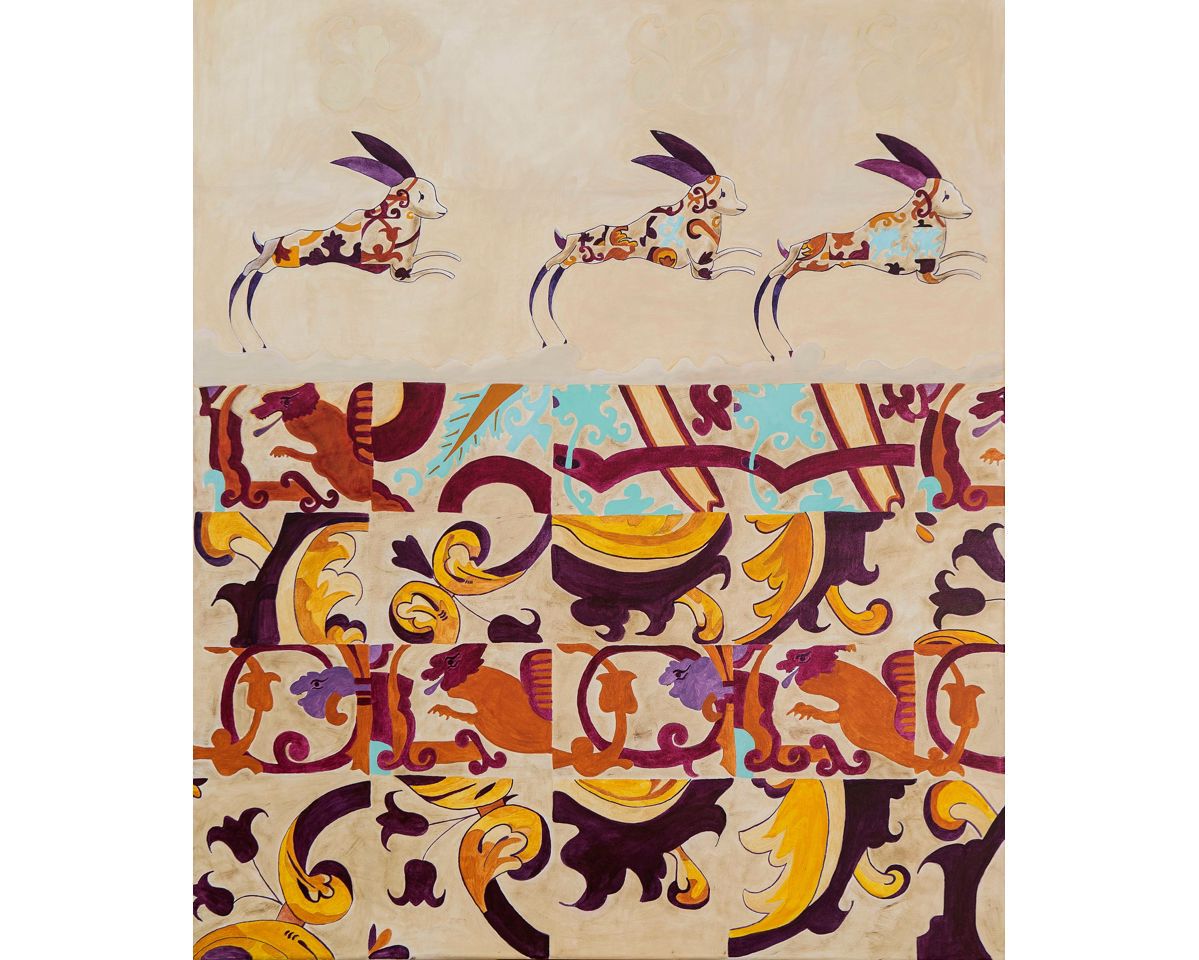
Rabbits and the 17th Century Dragon Tiled Acrylic on canvas, 120x100cm
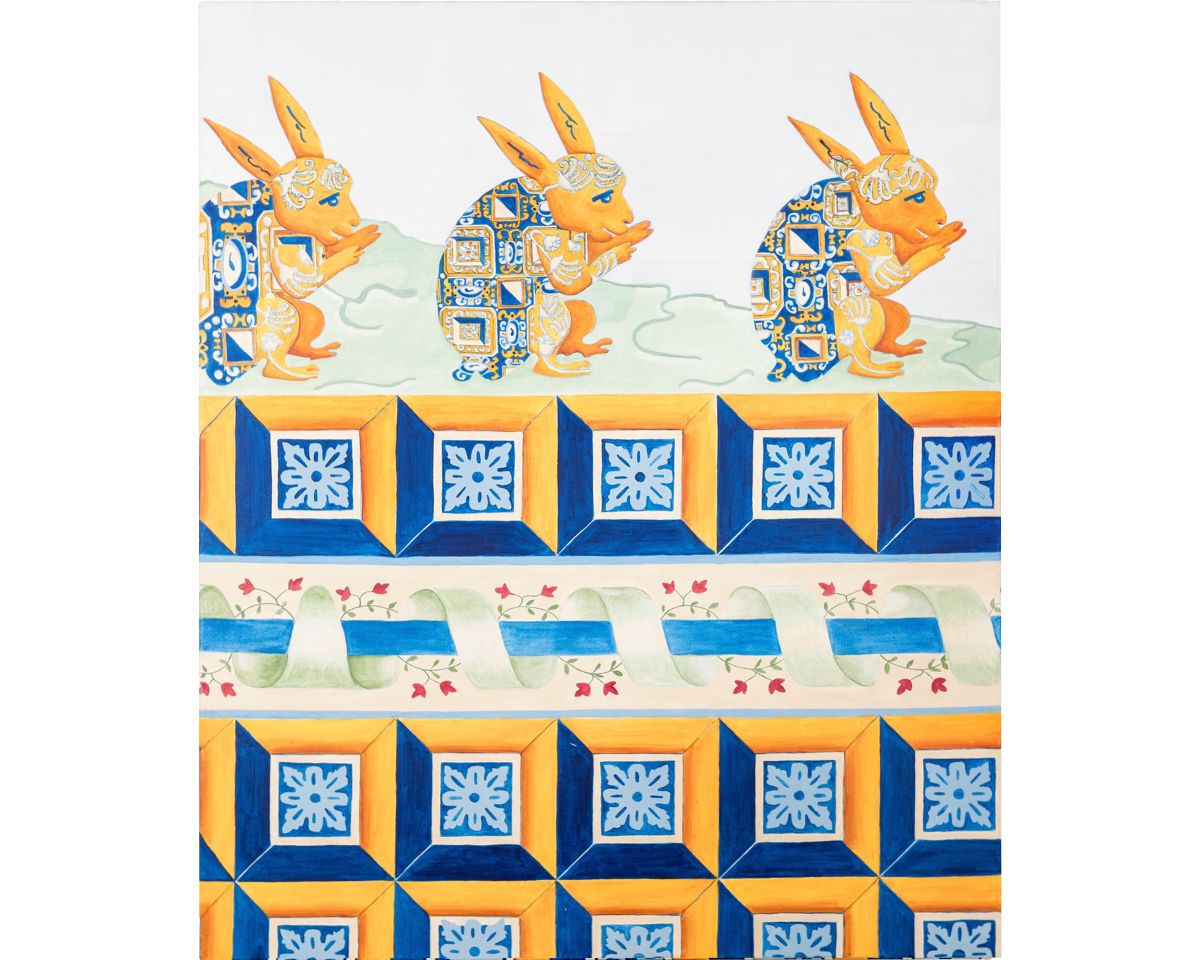
Hares in Conversation Acrylic on canvas, 120x100cm
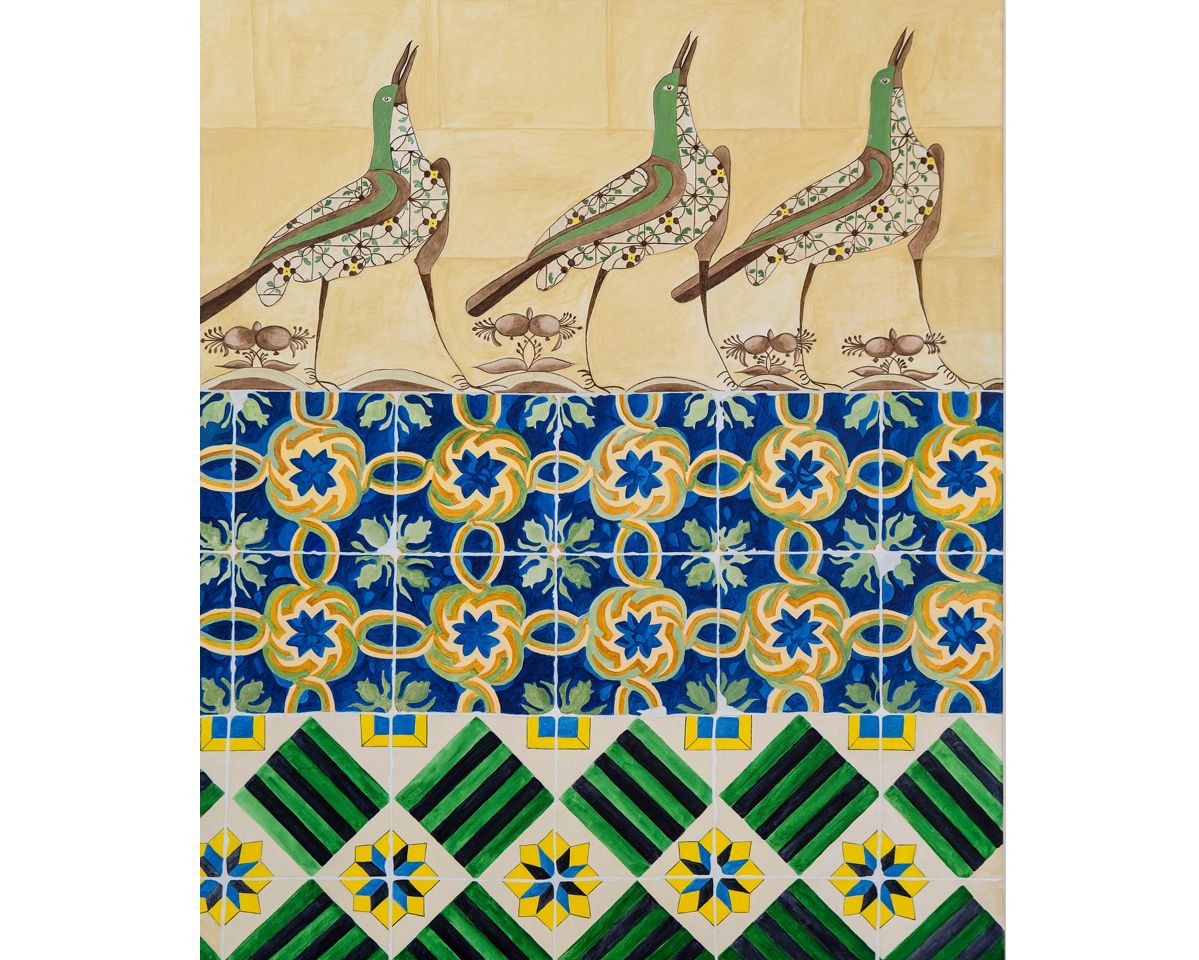
Calling Birds Acrylic on canvas, 120x100cm
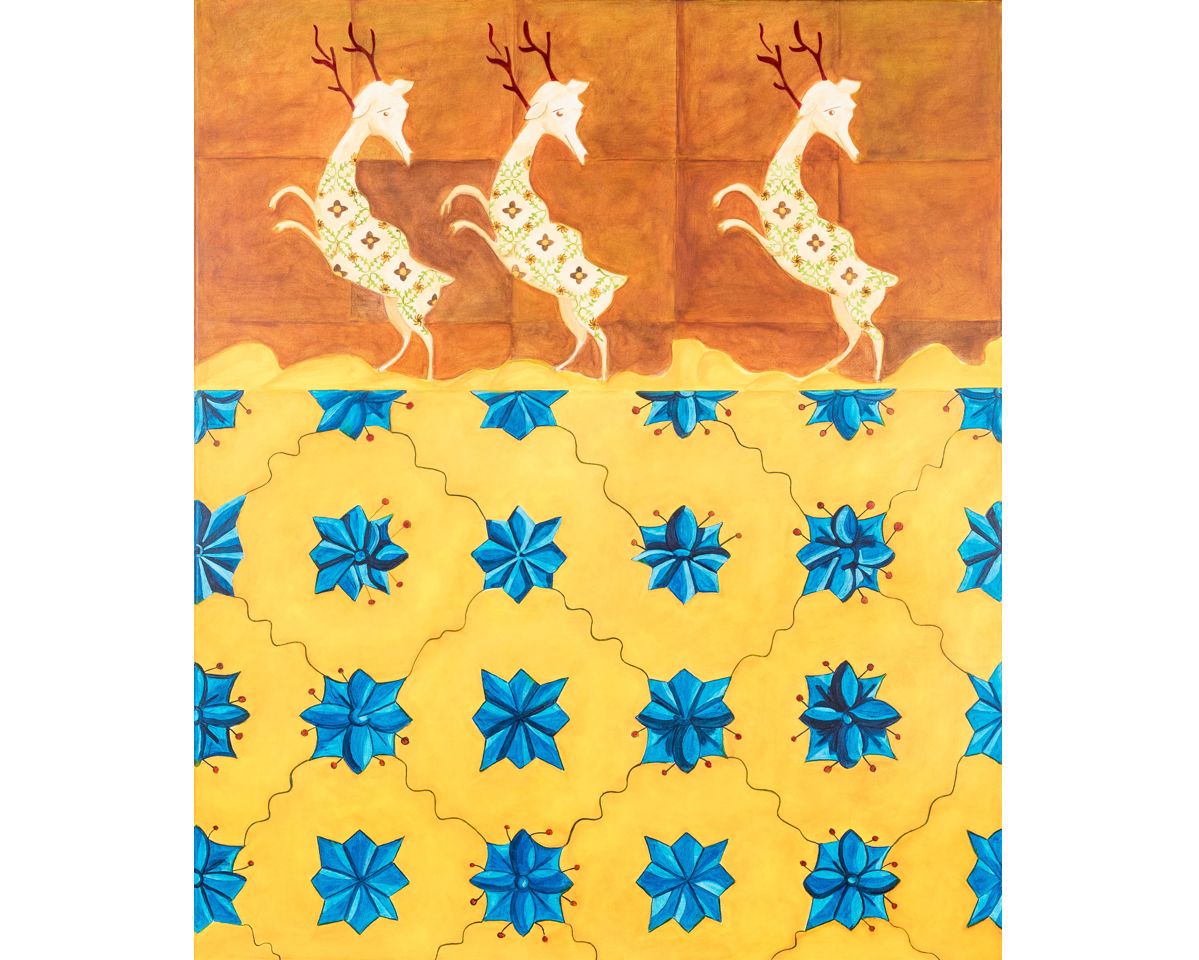
Startled Stags Acrylic on canvas, 120x100cm
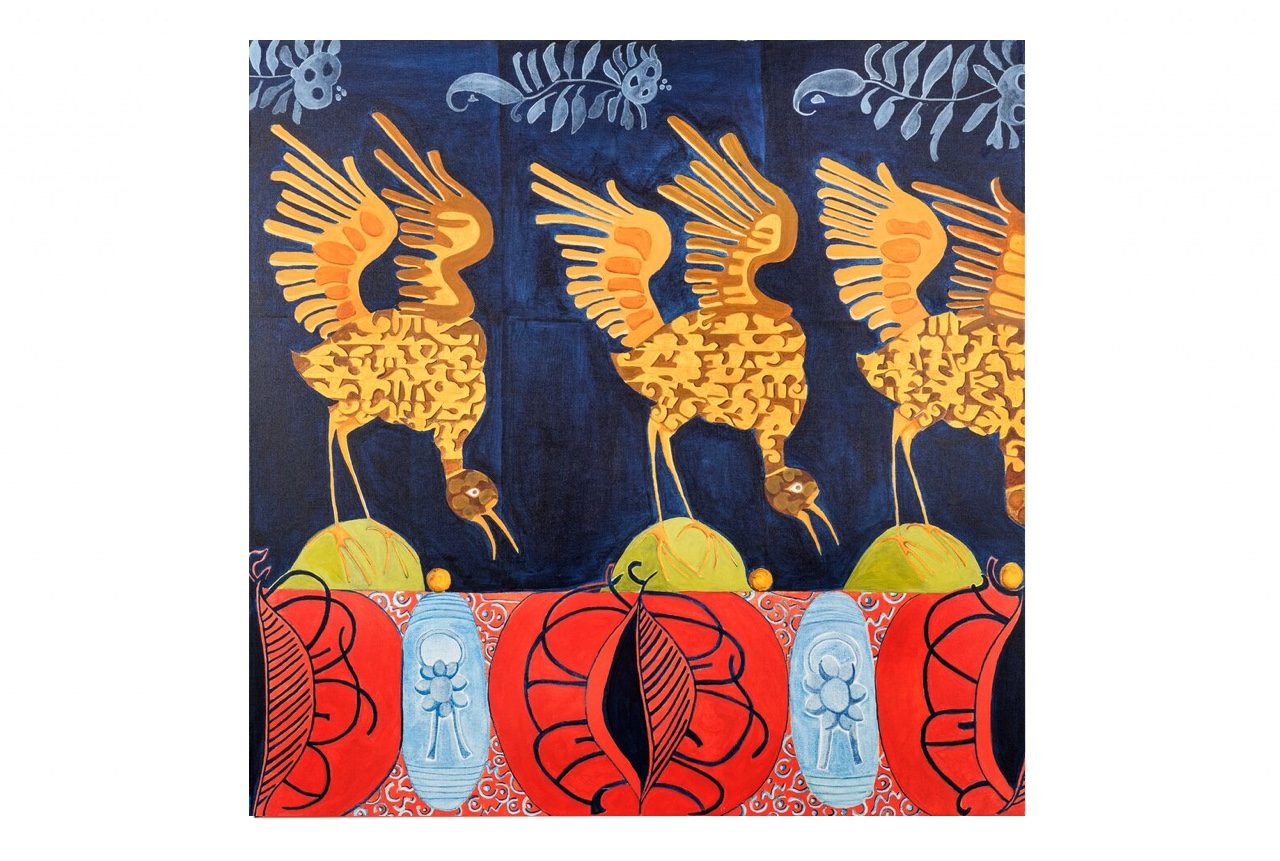
Birds on a Dark Blue Background Acrylic on Canvas, 90x90cm
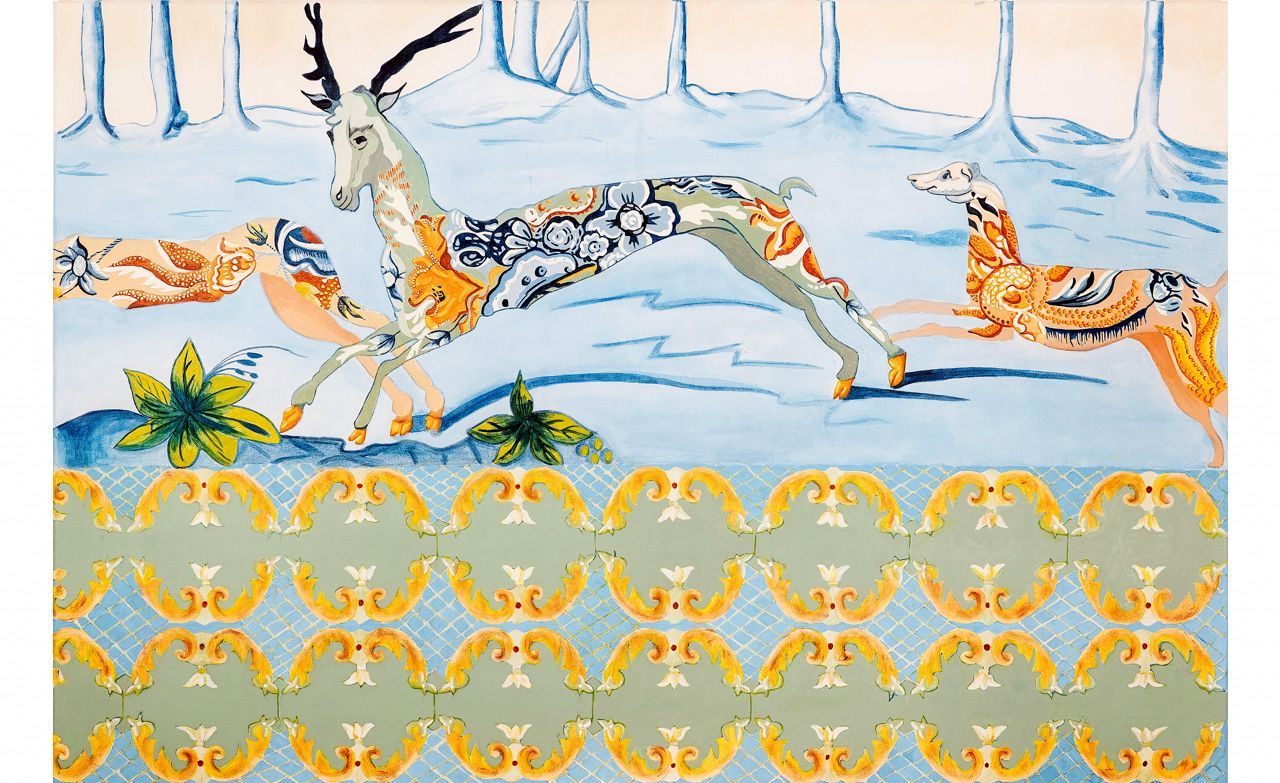
The Deer Chase Acrylic on canvas, 120x80cm
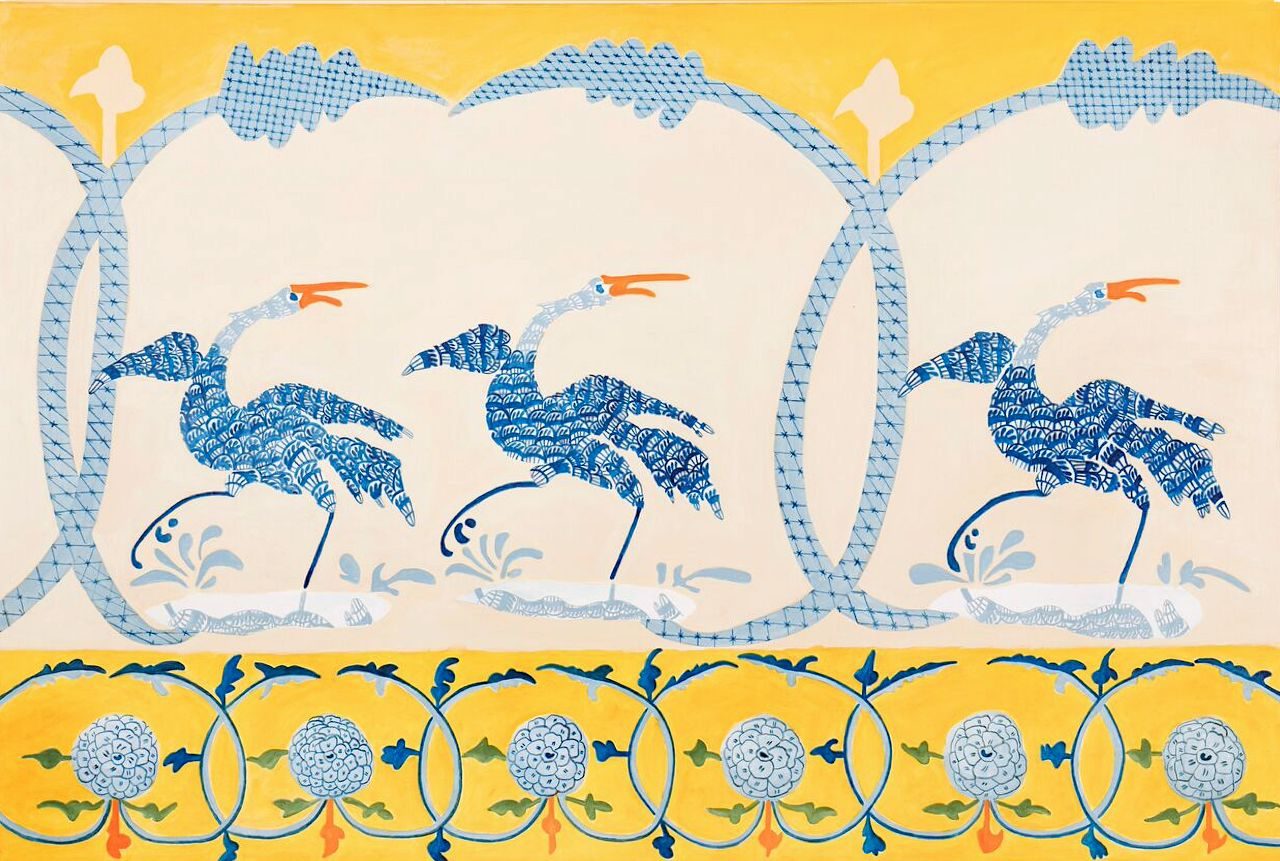
Looking Back Acrylic on canvas, 150x100cm

Chasing the Light Acrylic on Canvas, 100x80cm
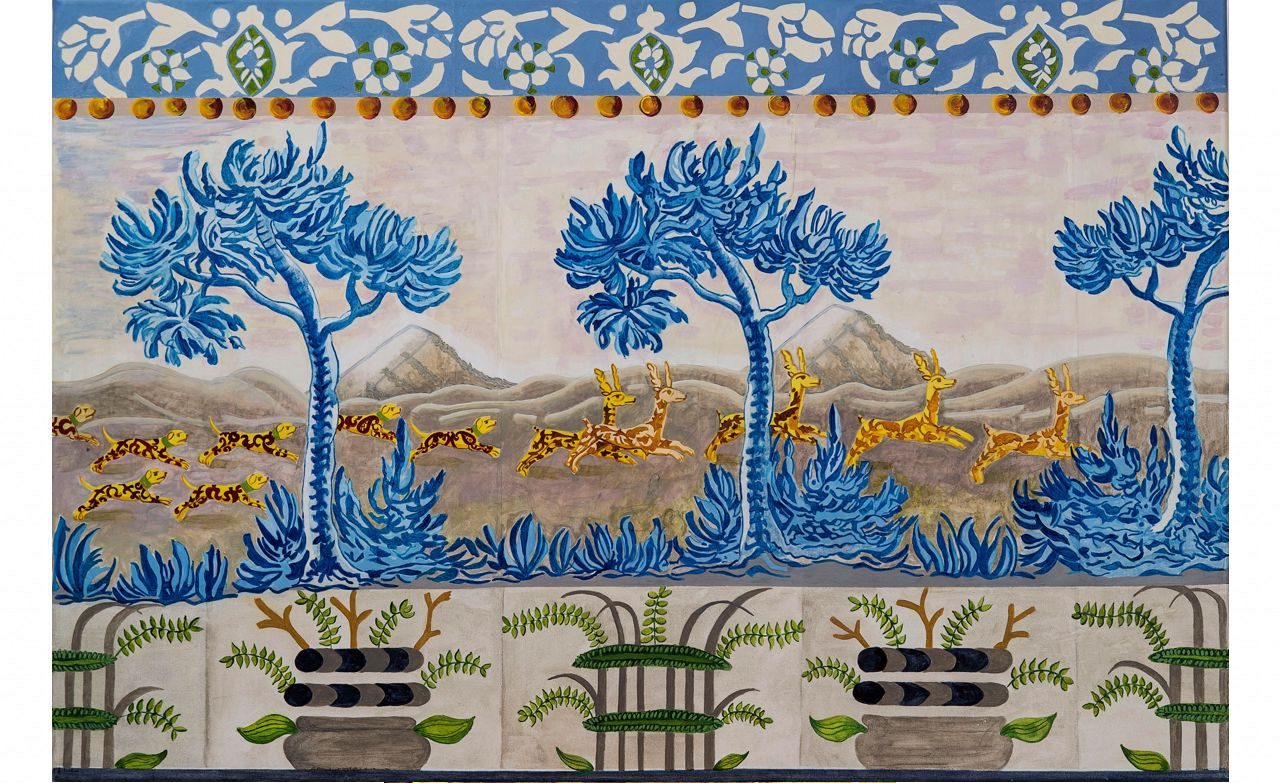
Dusk on the Planes Acrylic on canvas, 120x80cm
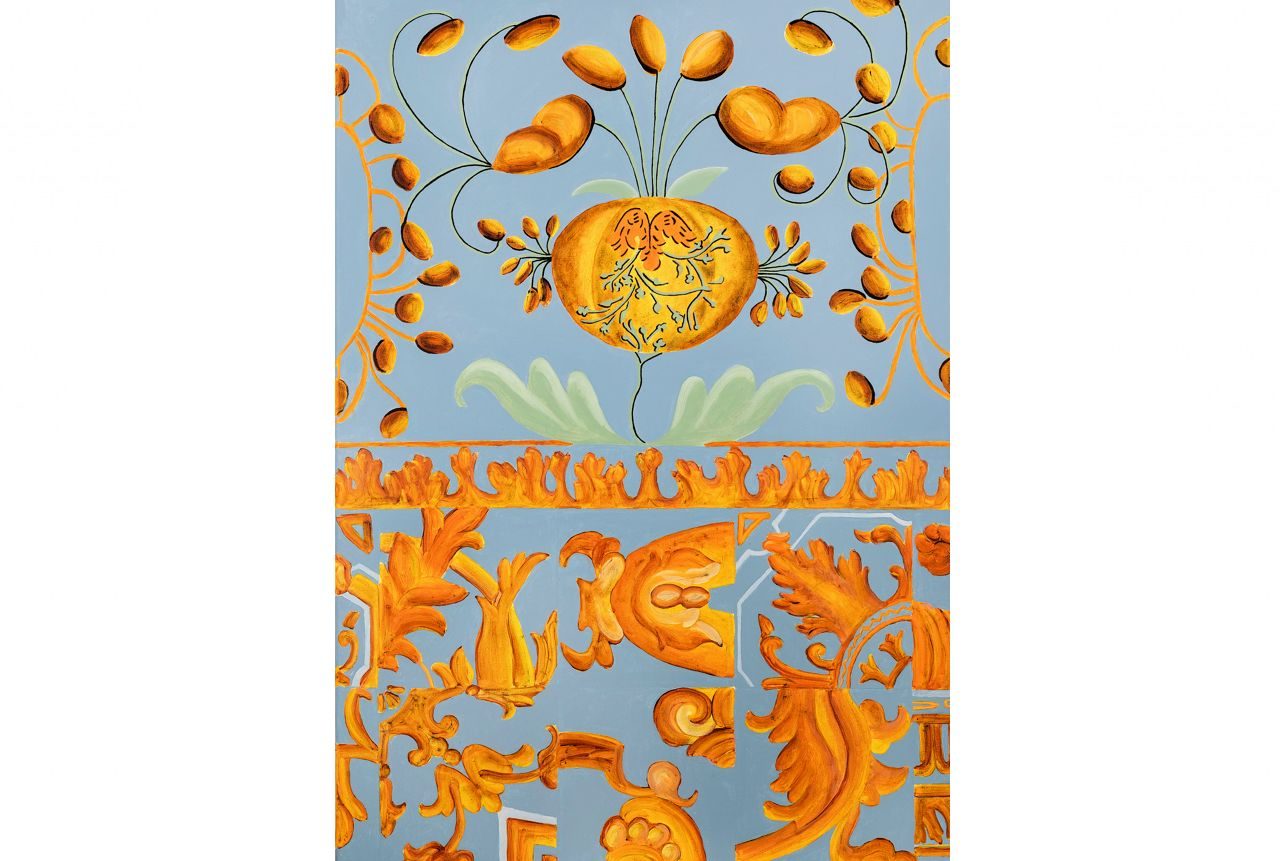
A 17th Century Flower Acrylic on canvas, 100x70cm
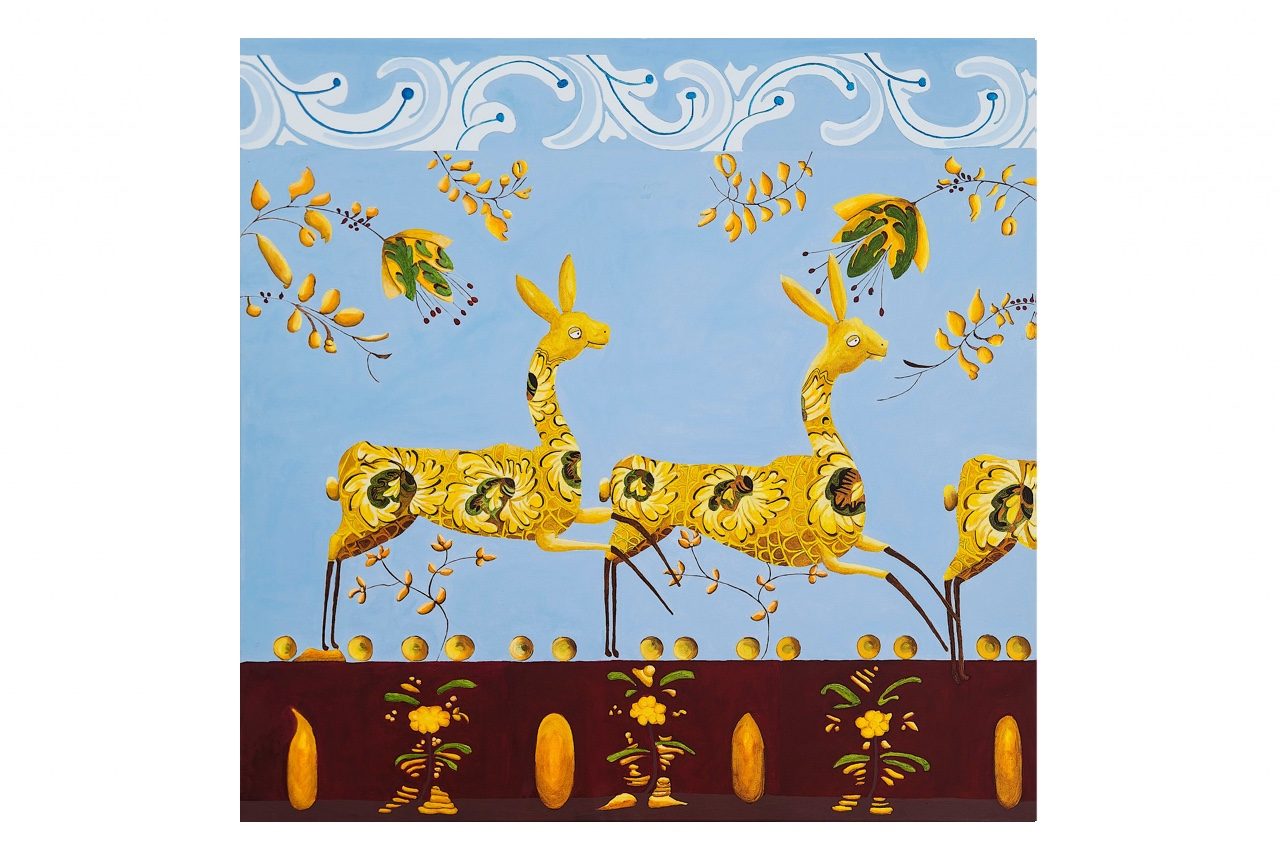
Three Gazelles on a Blue Background Acrylic on canvas, 90x90cm
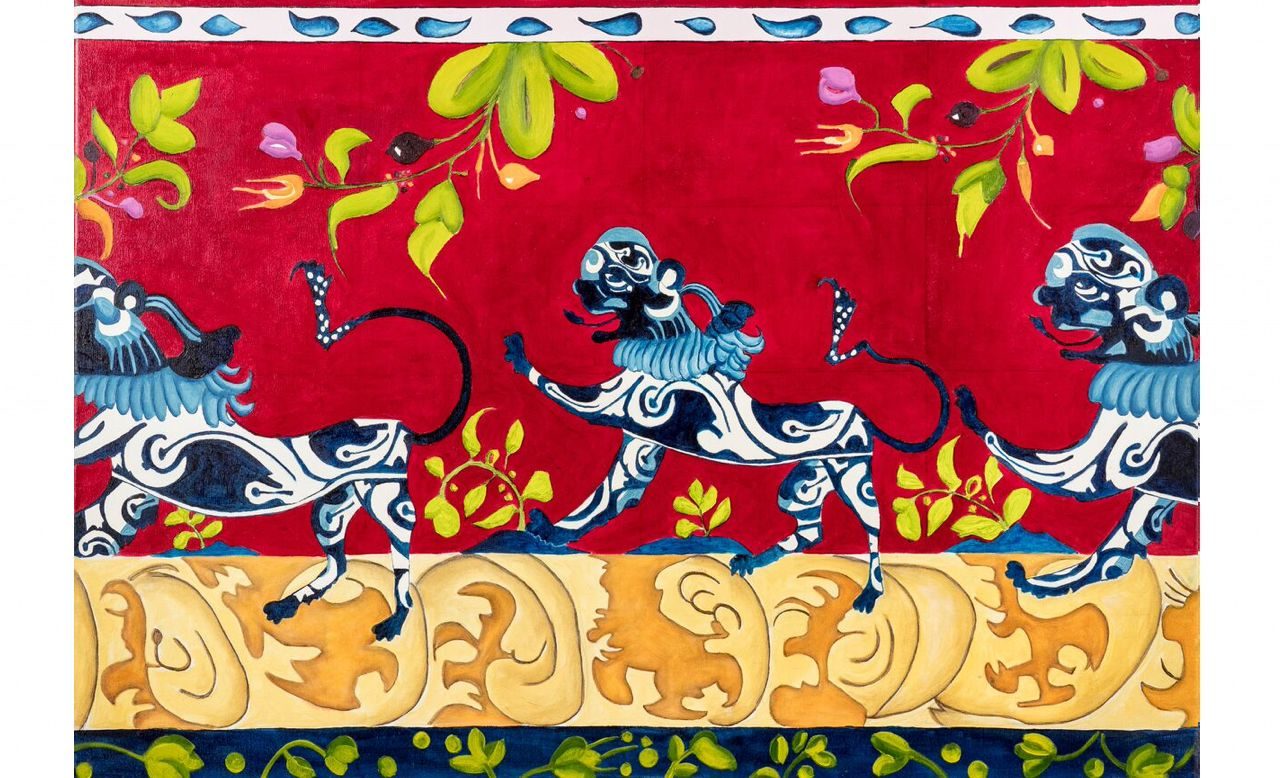
The Blue and White Lions Oil on canvas, 100x70cm
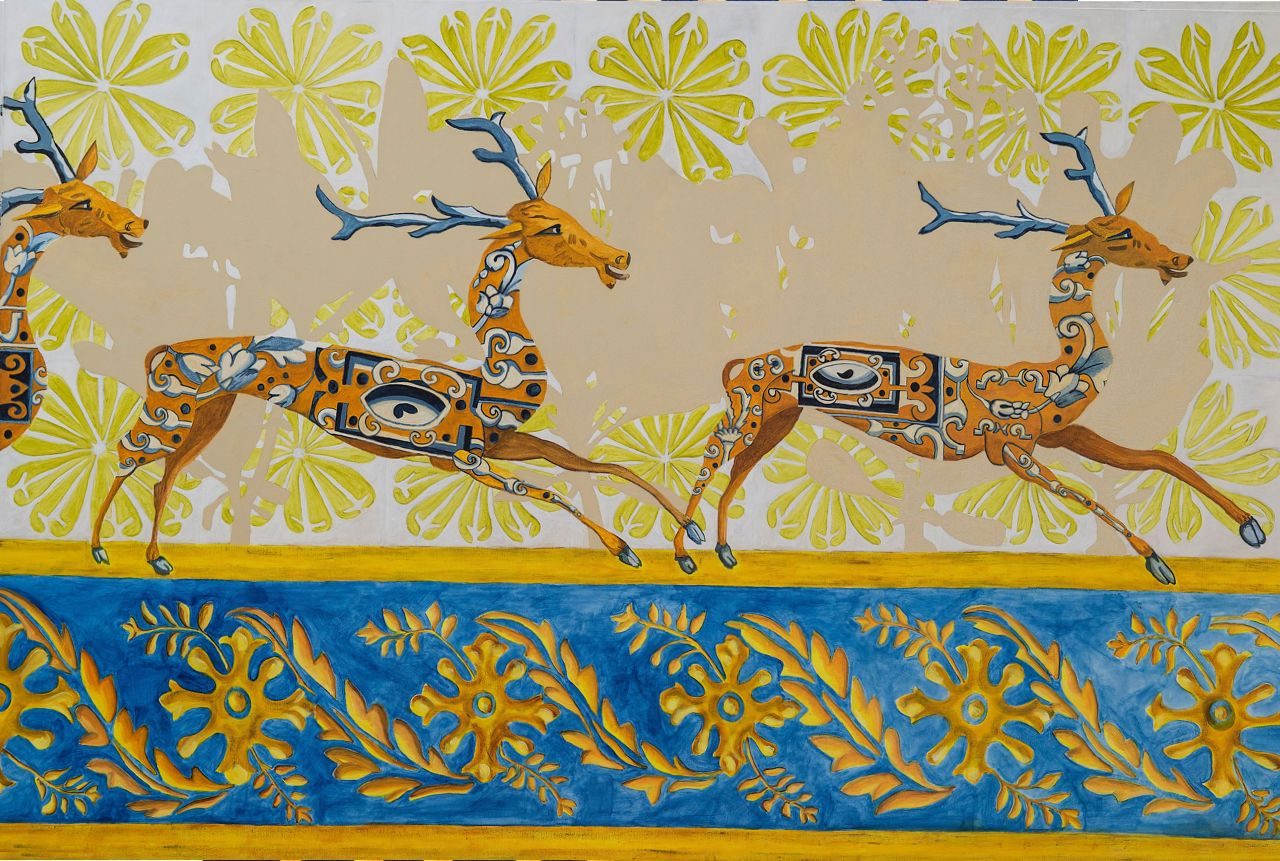
The Deer Chase 2 Acrylic on canvas, 150x100cm
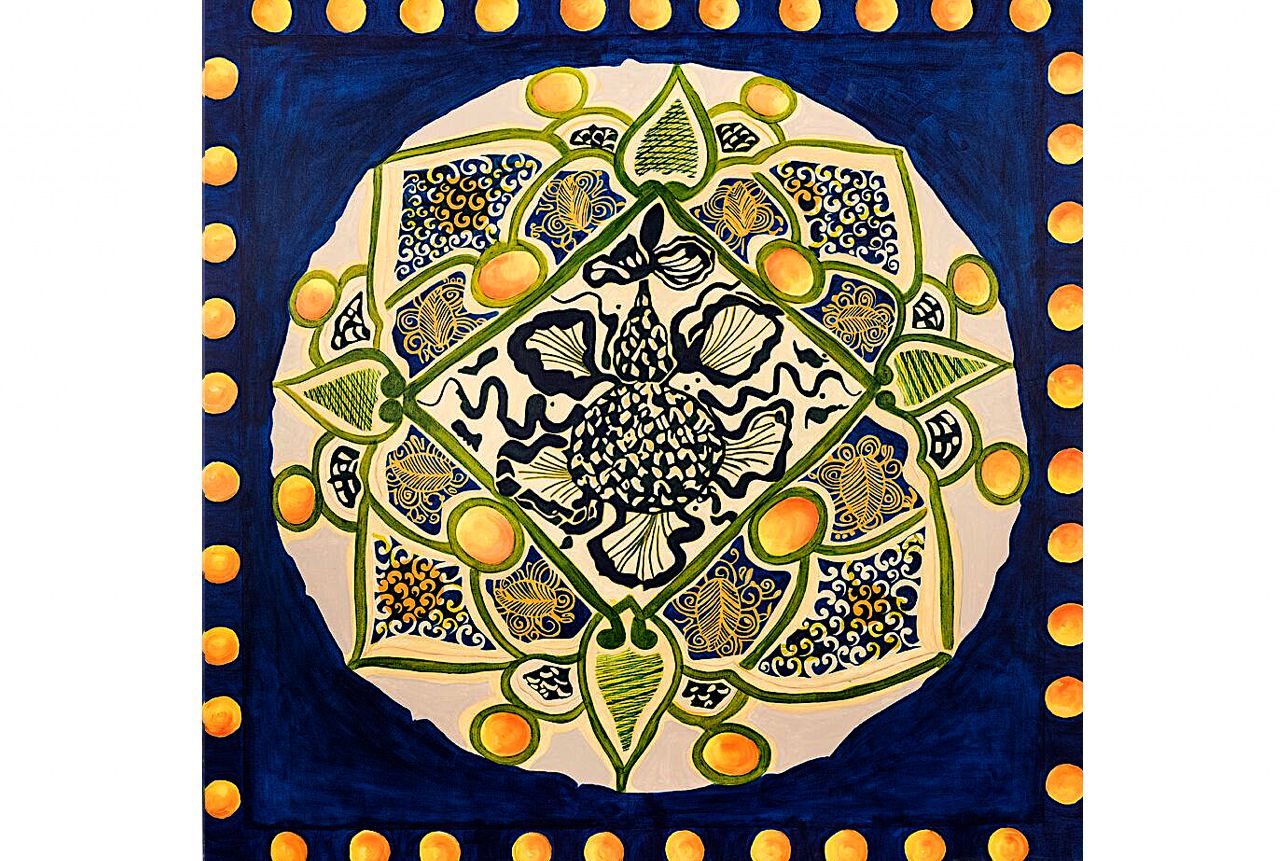
Triangles and Snakes Acrylic on canvas, 100x100cm
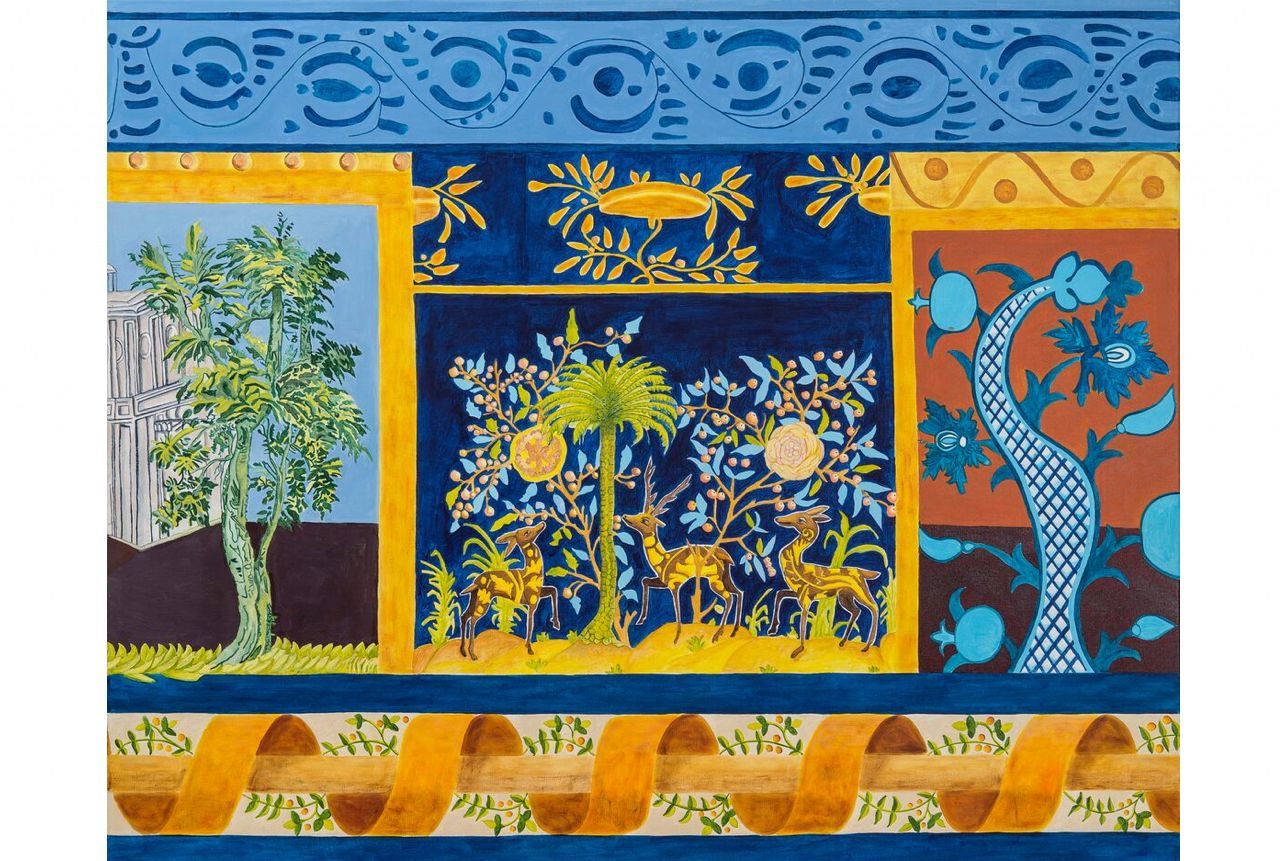
Scenes from the Garden Acrylic on canvas, 120x100cm
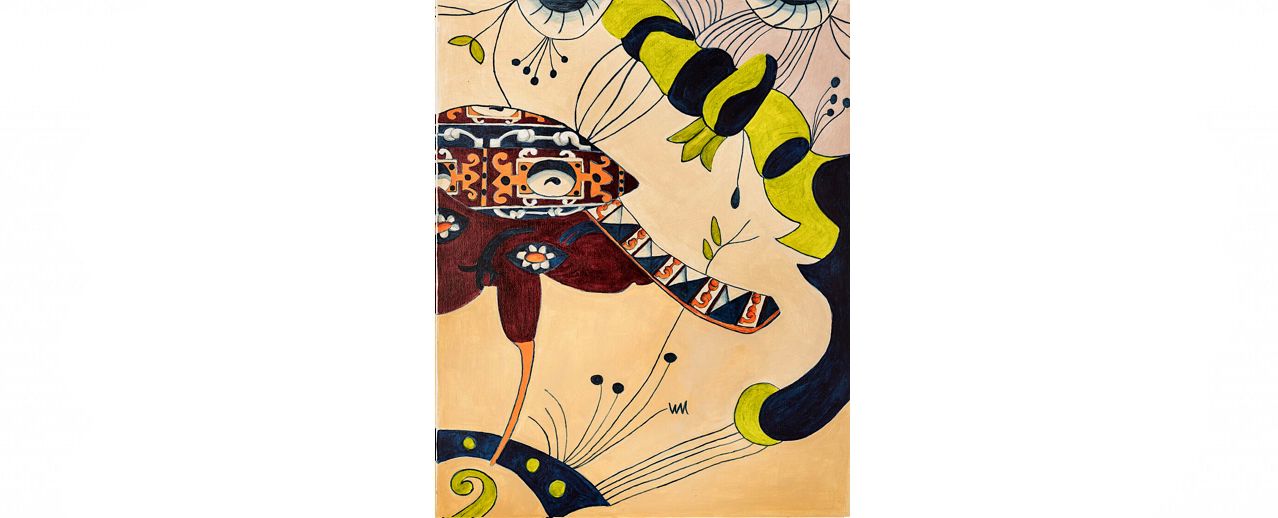
Tail of a Bird Acrylic on canvas, 50x40cm

Leaves, a detail Acrylic on canvas, 50x40cm
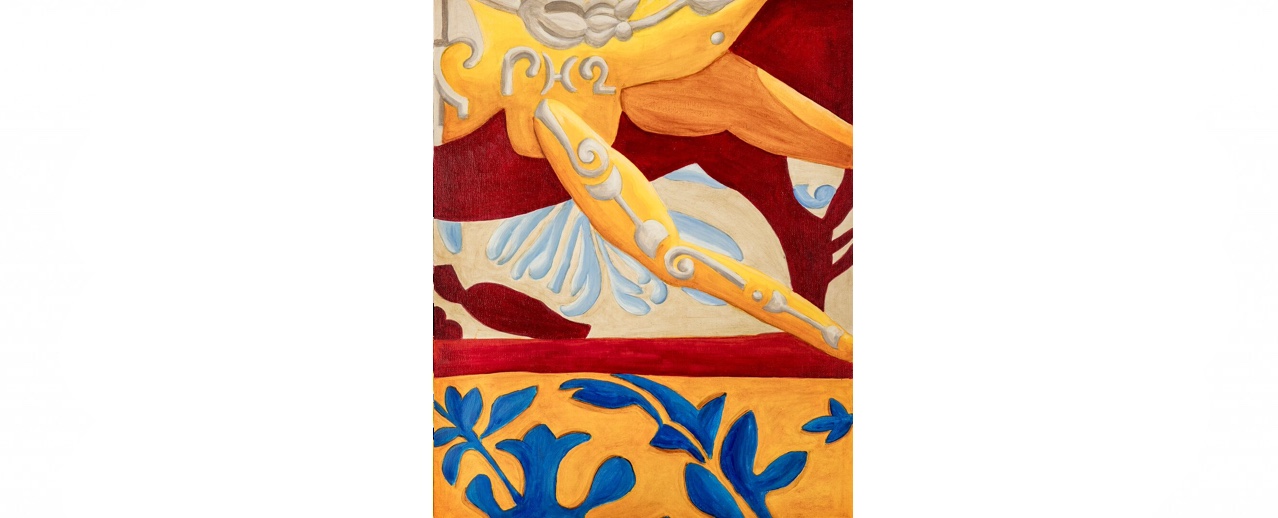
Close Up in the Chase Acrylic on canvas, 50x40cm
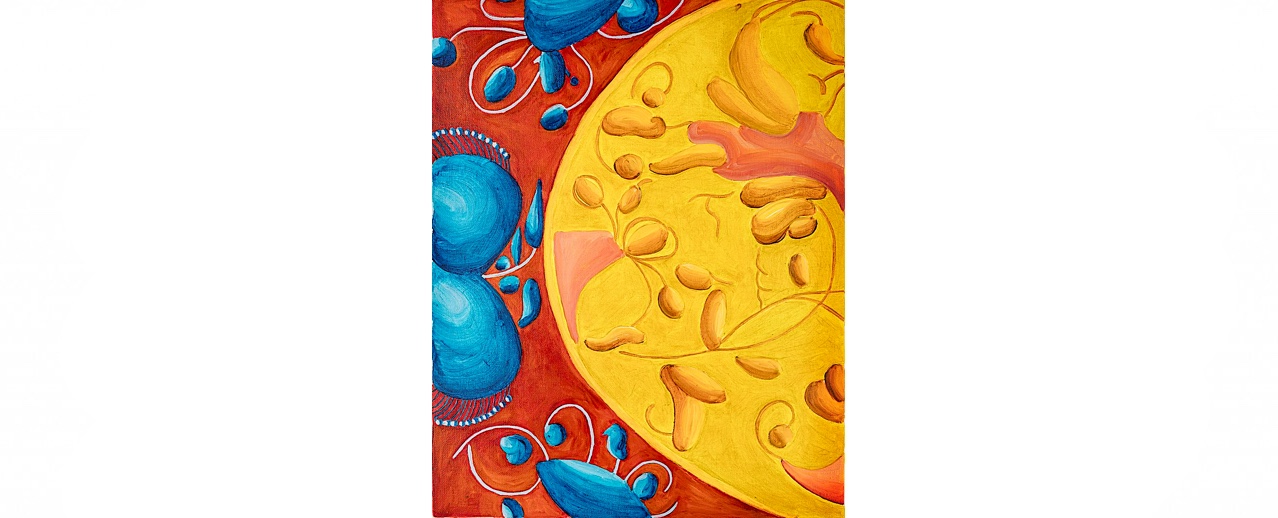
A Variation of Fruit and Leaves, 17th Century version Acrylic on canvas, 50x40cm
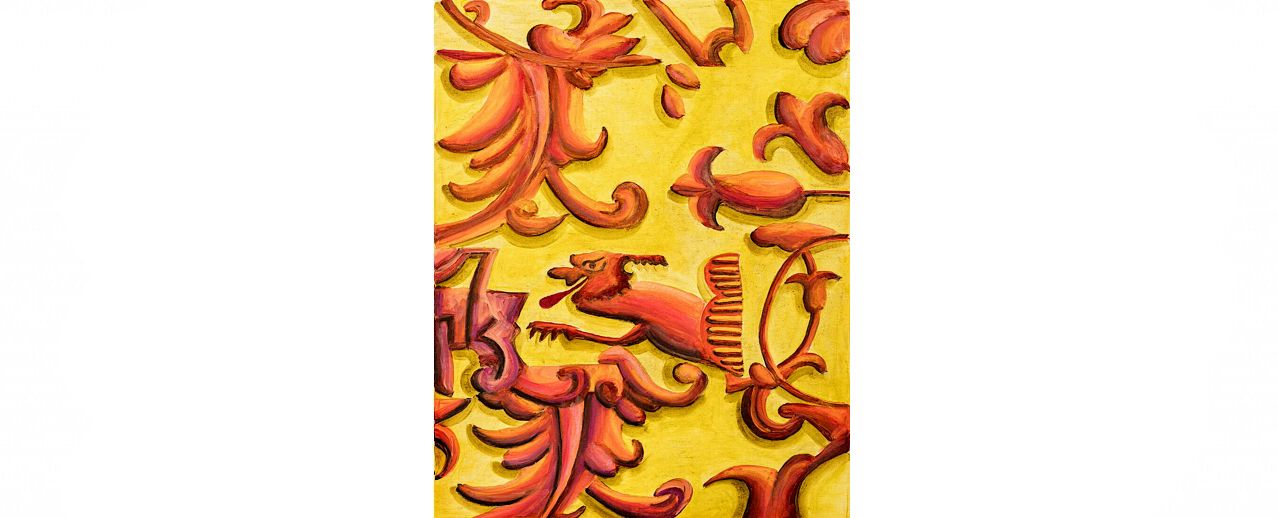
Dragon Tiles, a detail Acrylic on canvas, 50x40cm
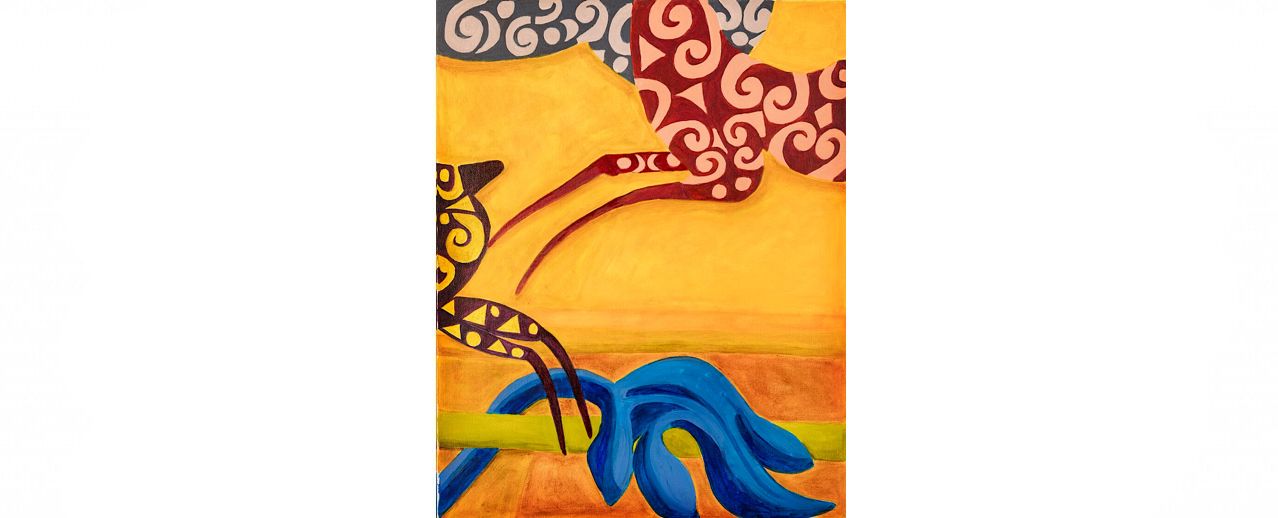
The Curled Blue Leaf Acrylic on canvas, 50x40cm

On the Run Acrylic on canvas, 60x60cm
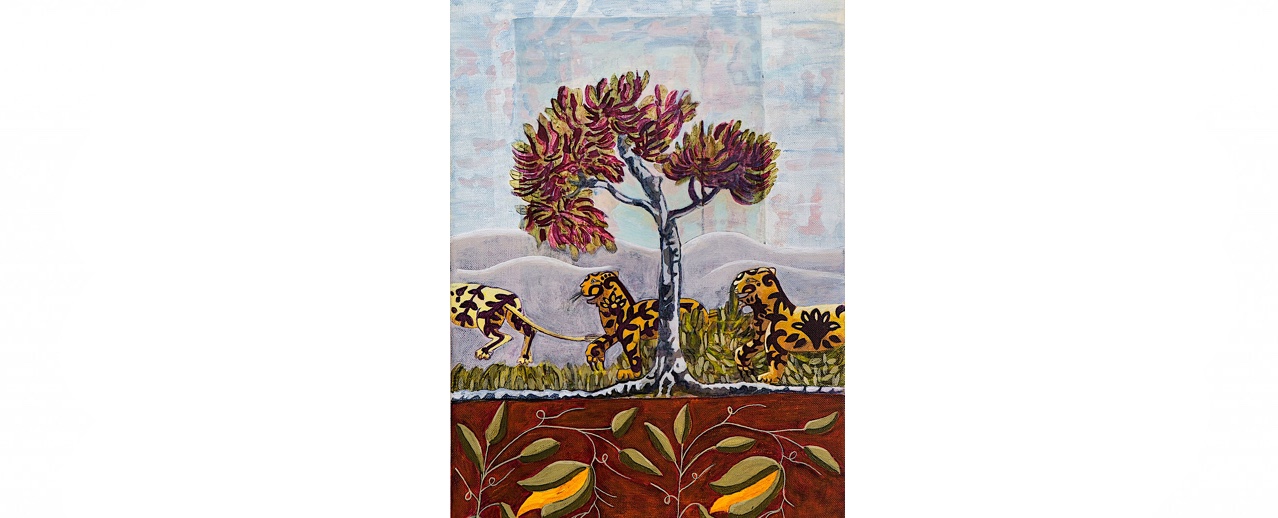
Tigers in Search Acrylic on canvas, 40x30cm
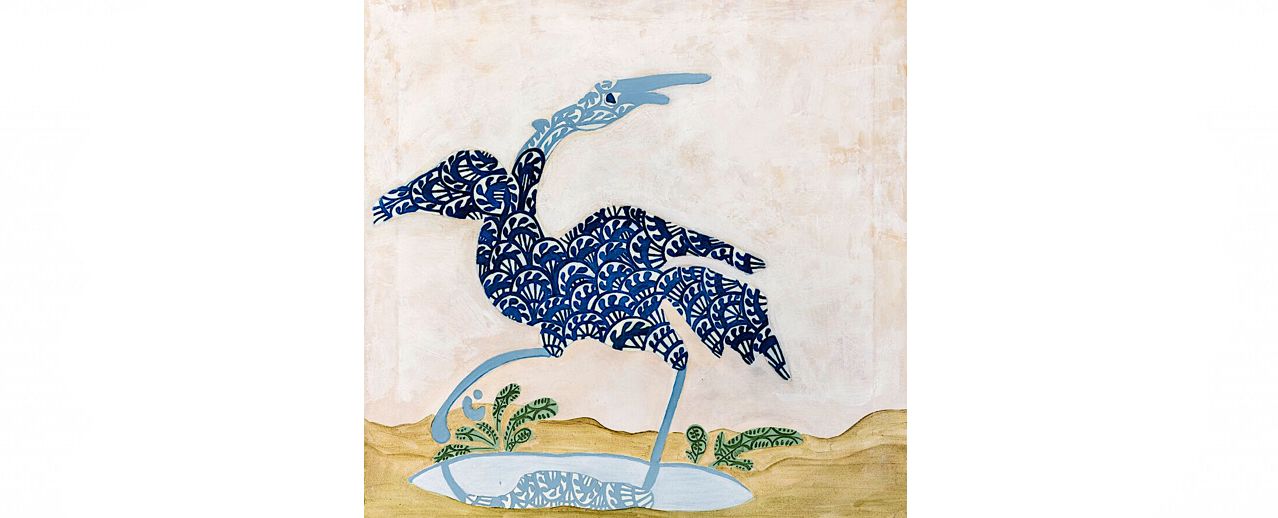
Looking Back - miniature Acrylic on canvas, 20x20cm
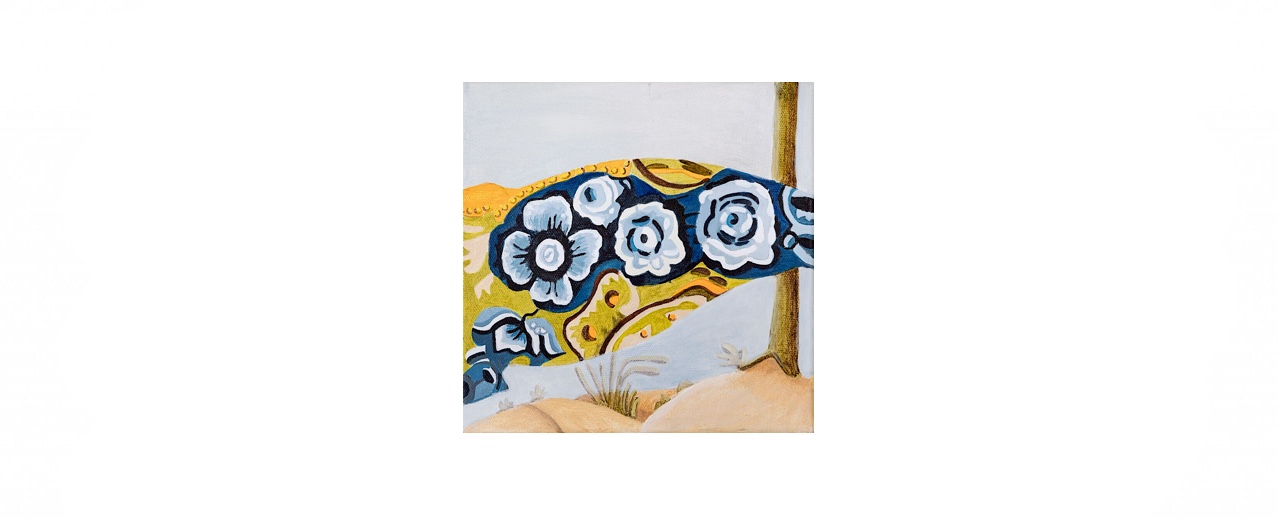
A Deer, a detail Acrylic on canvas, 20x20cm
Reflections on Islamic Splendour
Reflections on Islamic Splendour, our third solo exhibition in Dubai in 2012, is based around museum pieces from the region. Twelfth century incense burners and water holders from the era, along with the intricate Islamic embroideries of the eighteenth century, were Kate’s source of inspiration, becoming the new axis for her rich visual language.
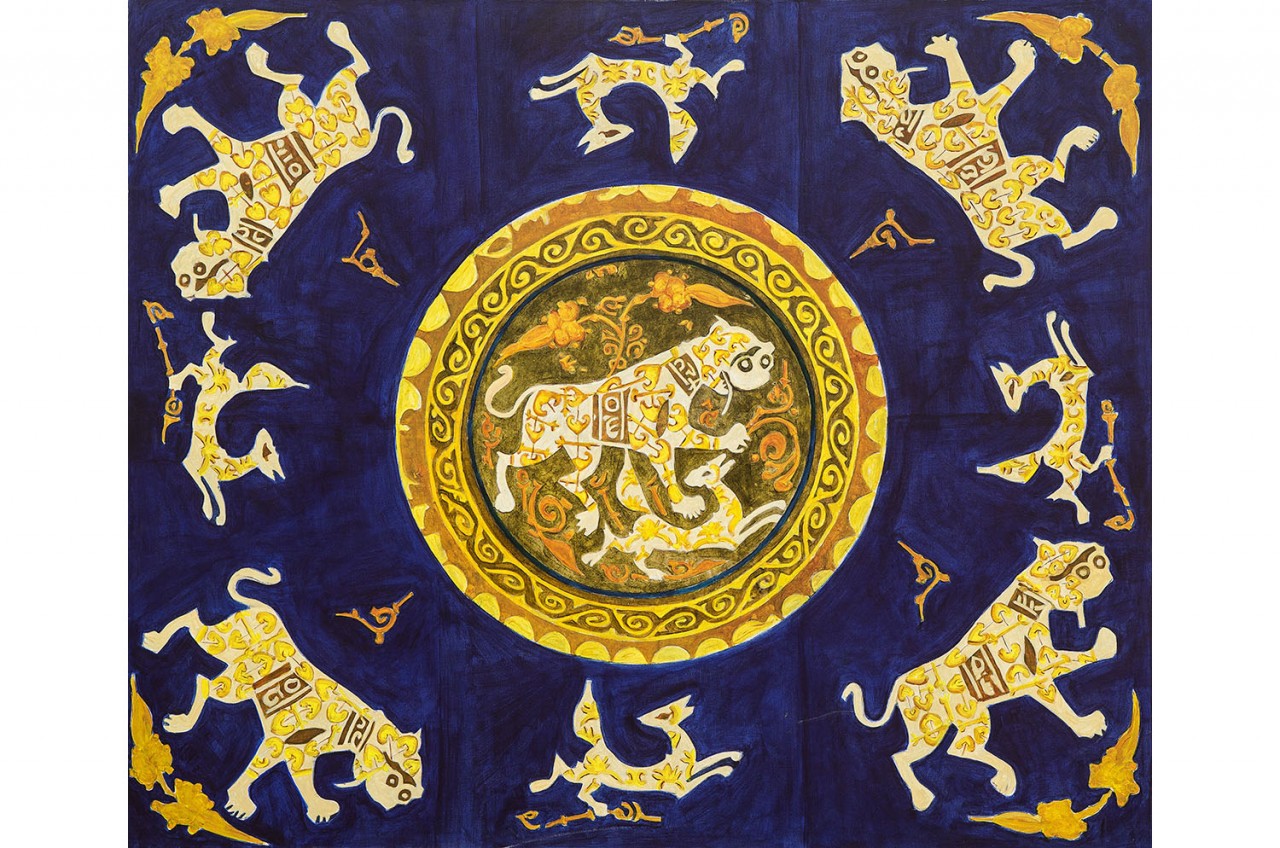
A Lion Attacking a Fox
Acrylic on canvas, 120×100cm
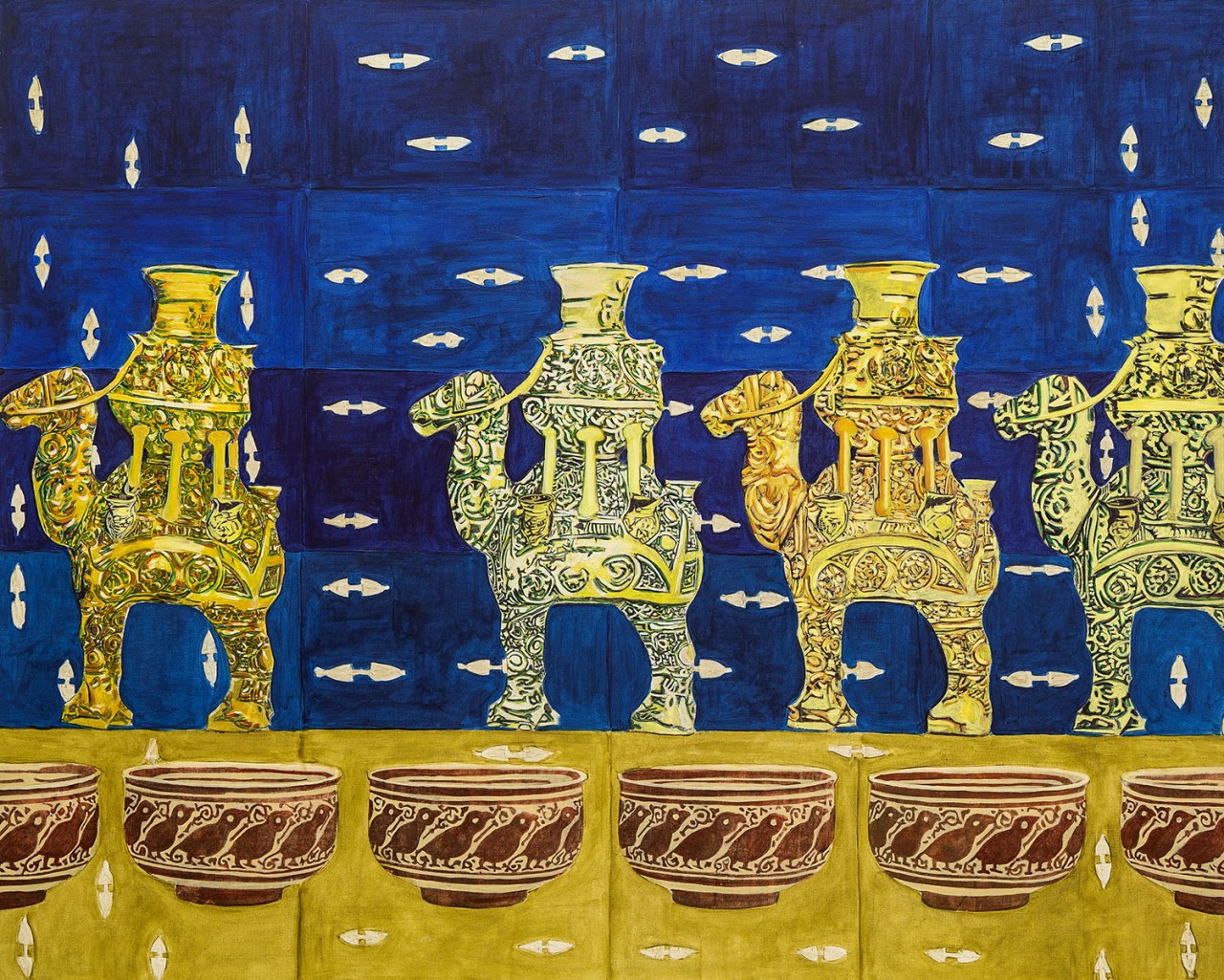
Figures of Dromedaries
Acrylic on canvas, 150×120cm
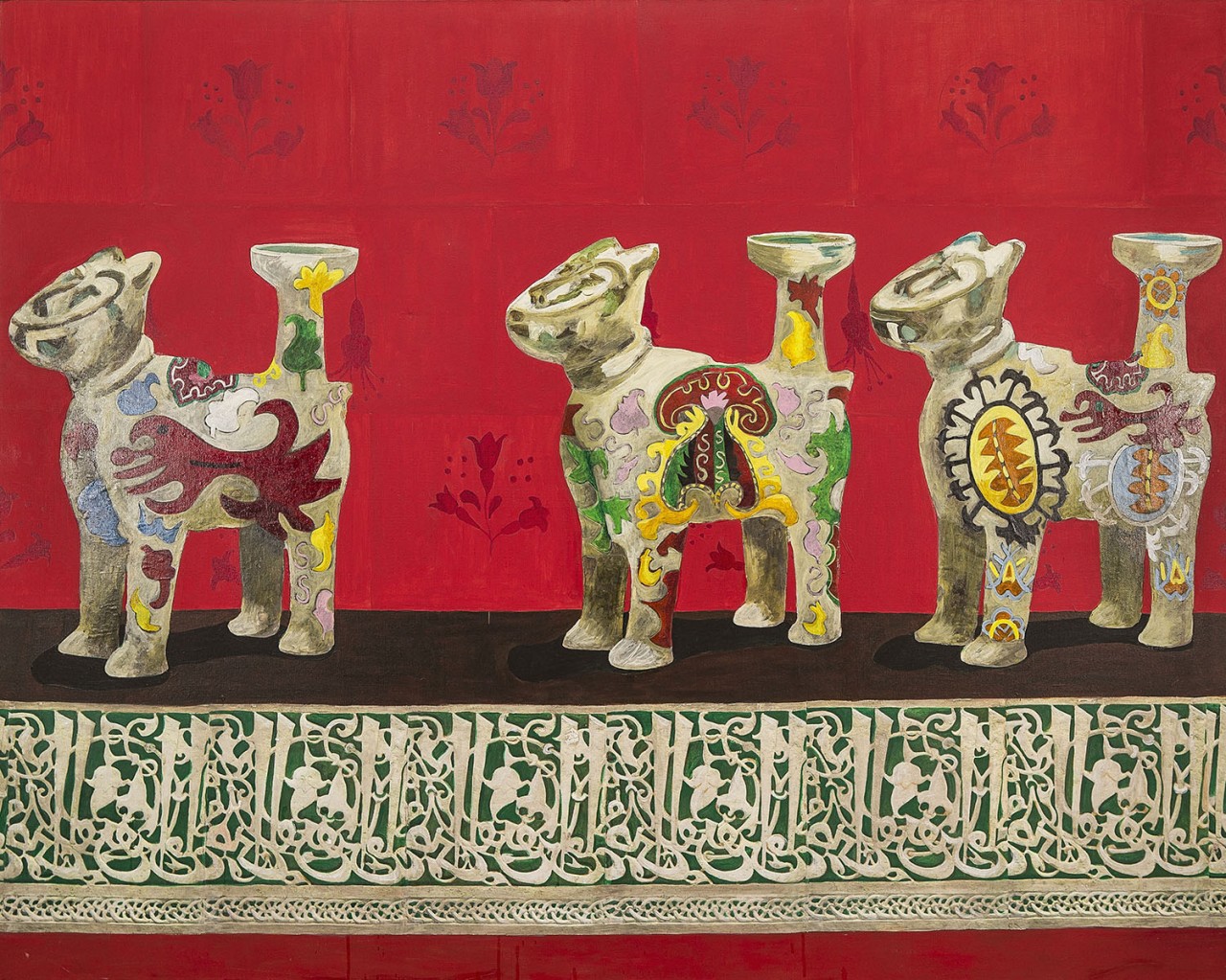
Incense Burner in the Form of a Feline
Acrylic on canvas, 150×120cm
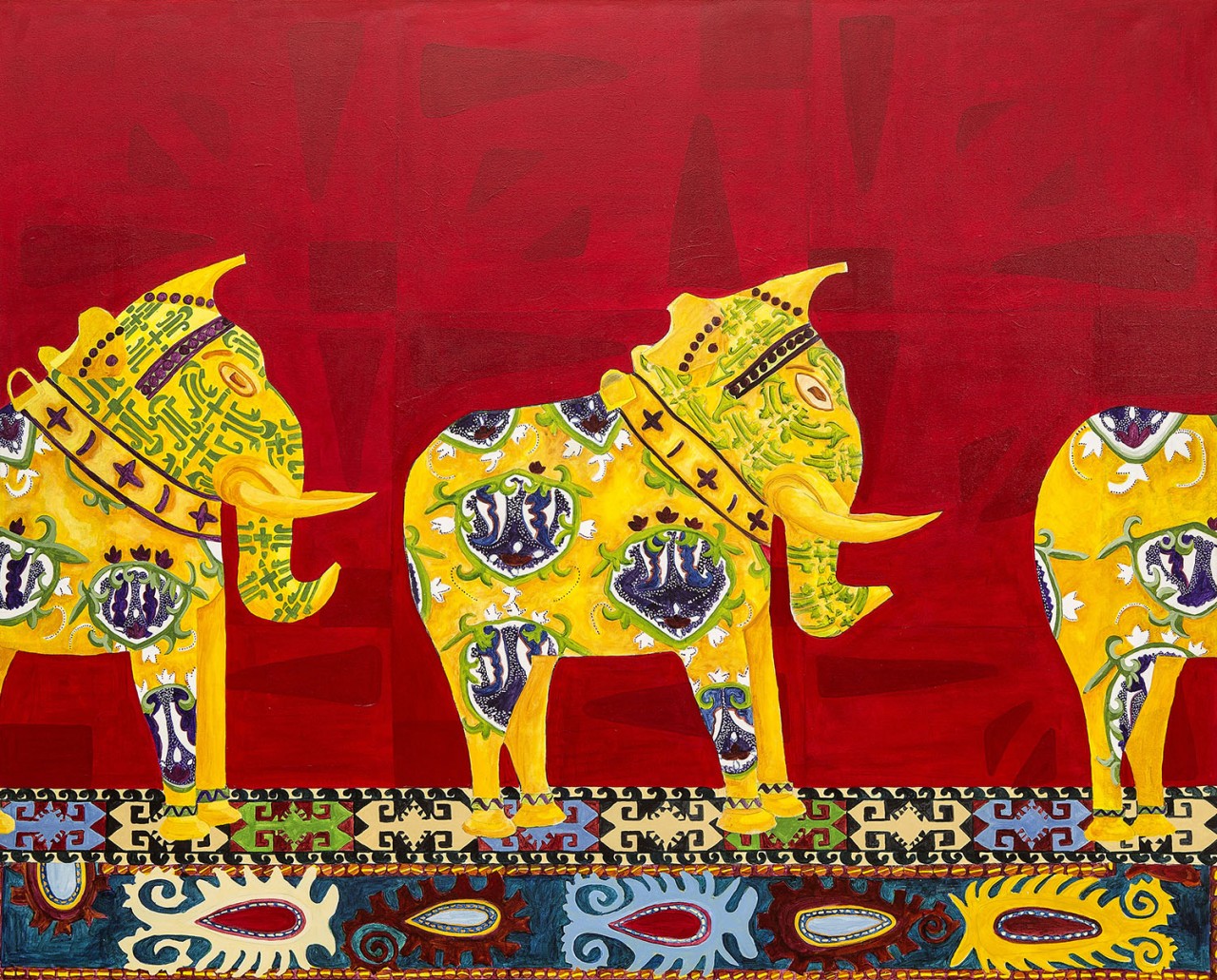
Incense Burner in the Shape of an Elephant
Acrylic on canvas, 150×120cm
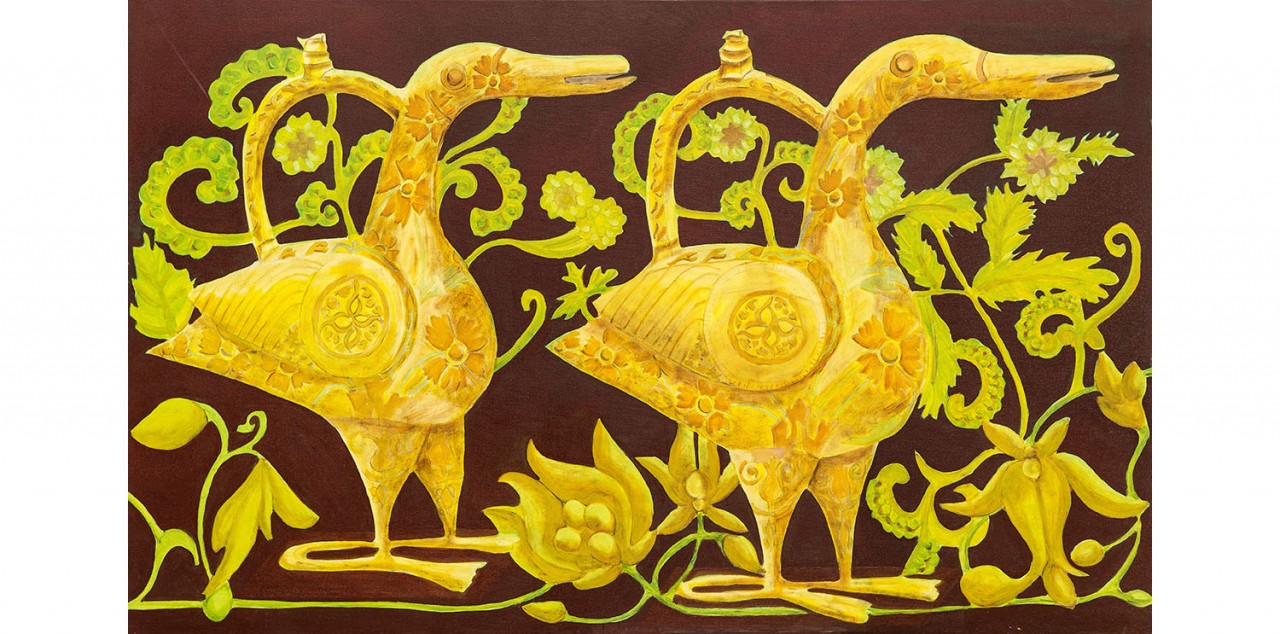
Aquamanile in the Form of a Goose
Acrylic on canvas, 120×70cm
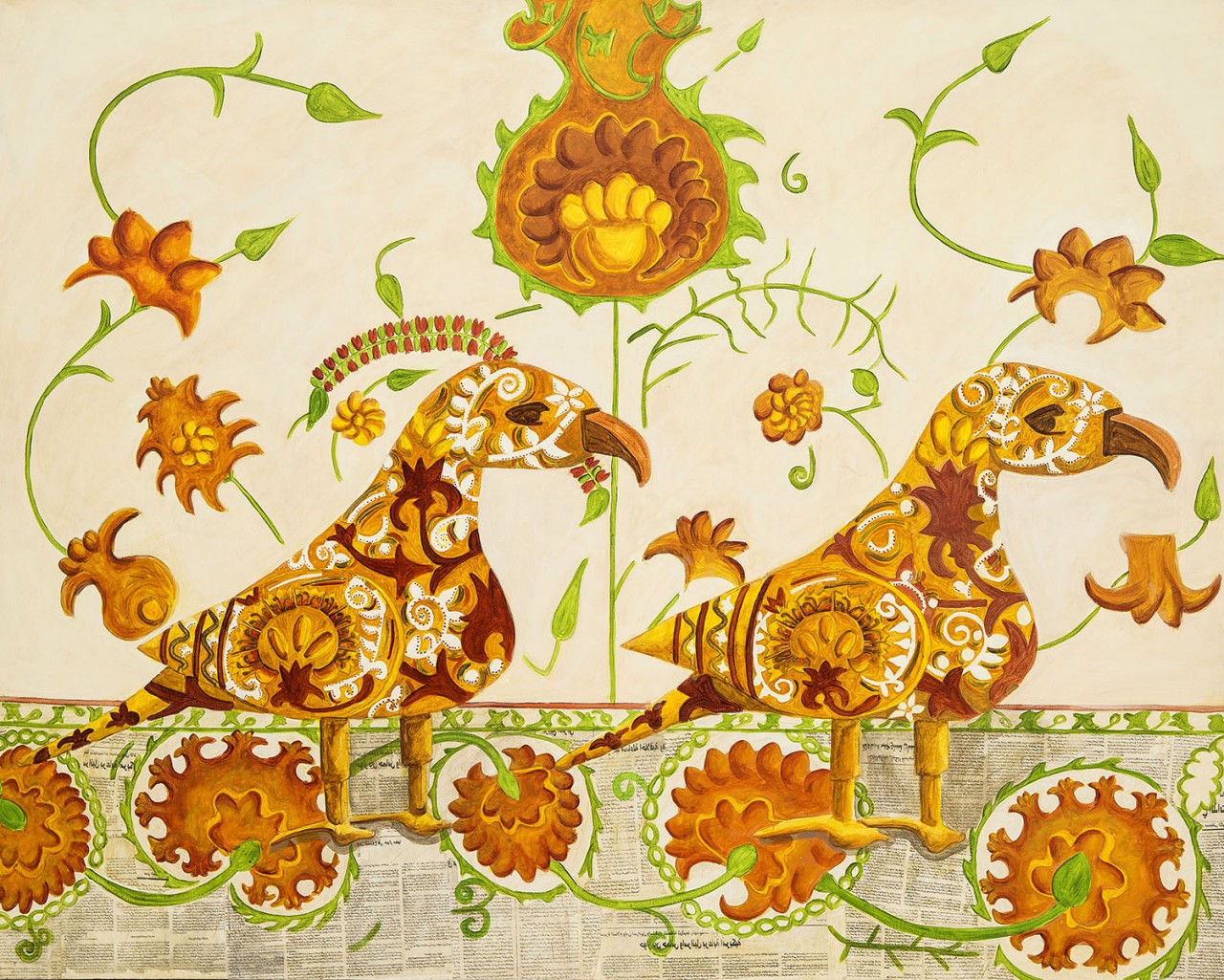
The Dove Incense Burners
Acrylic on canvas, 150×120cm
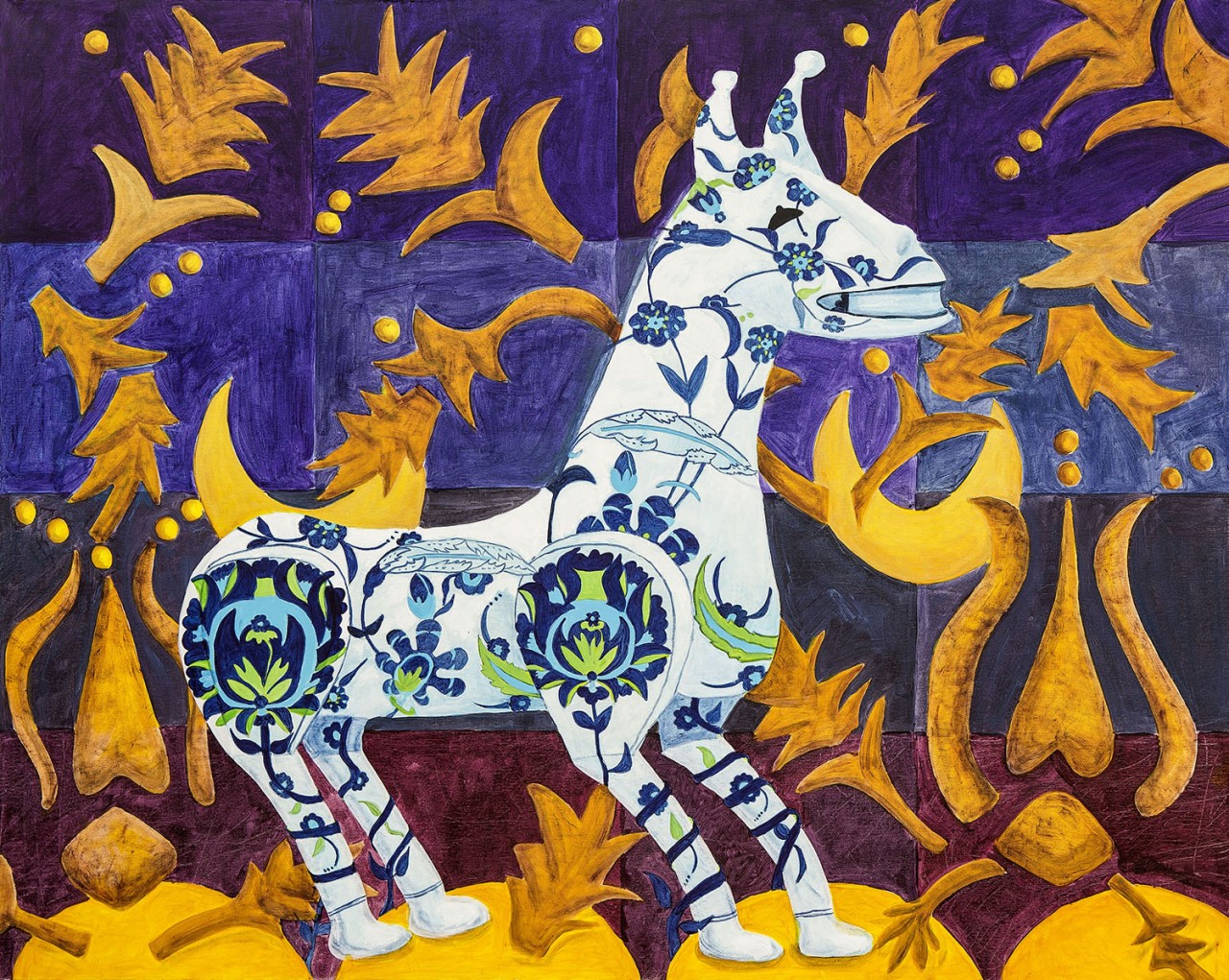
The Turkish Lynx
Acrylic on canvas, 150×120cm

Lynx Incense Burner on a Blue Background
Acrylic on canvas, 150x120 cm
Inspiration from Medieval Persia
Toledo’s second Dubai exhibition in 2010 shows the artist’s sensibilities as a collector, and her love of porcelain and its patterns. Inspired by twelfth century Persian ceramics, these paintings play powerfully with scale: what is minute on porcelain is given a different dimension on canvas.
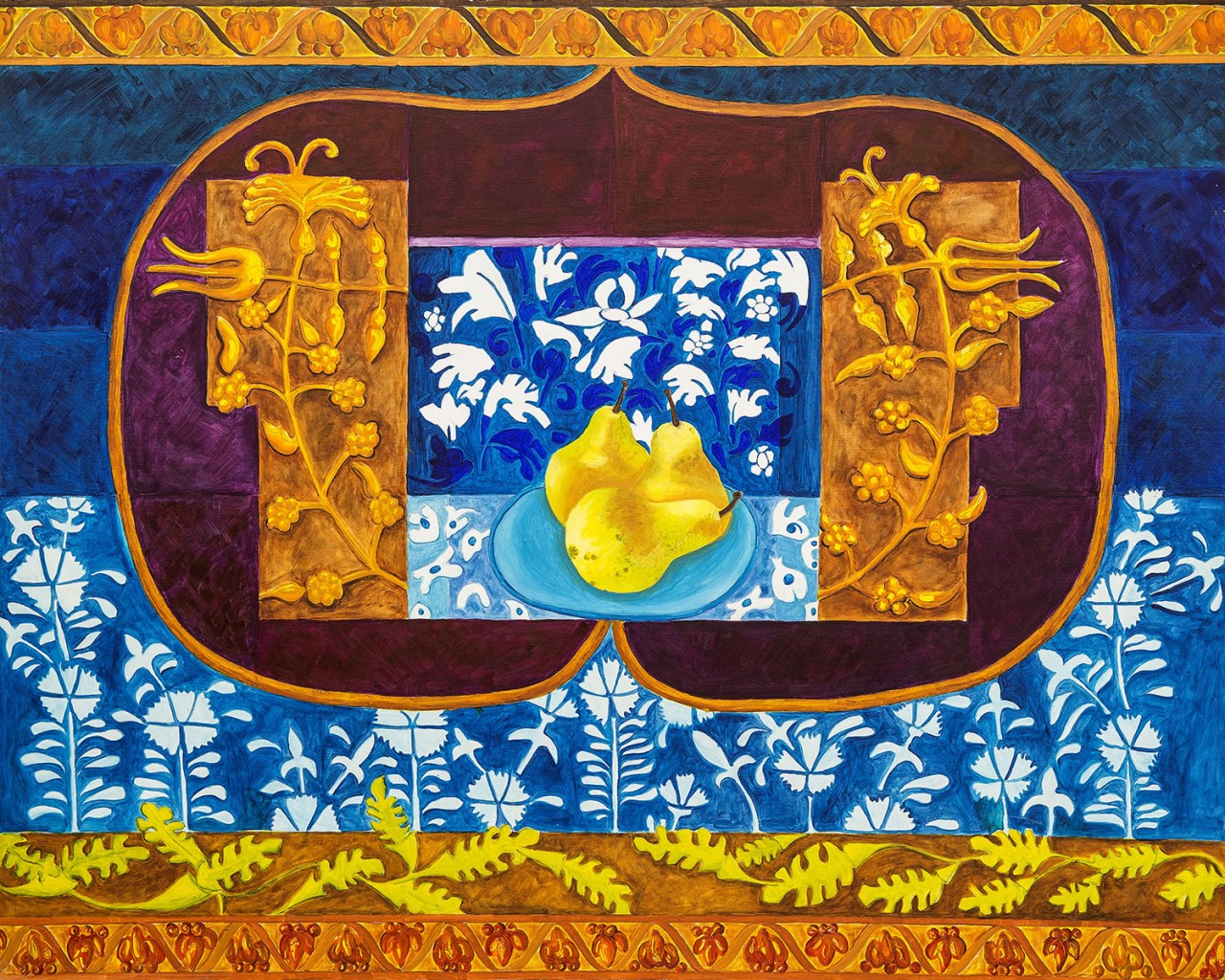
Three Pears on a Plate
Acrylic on canvas, 150×120cm
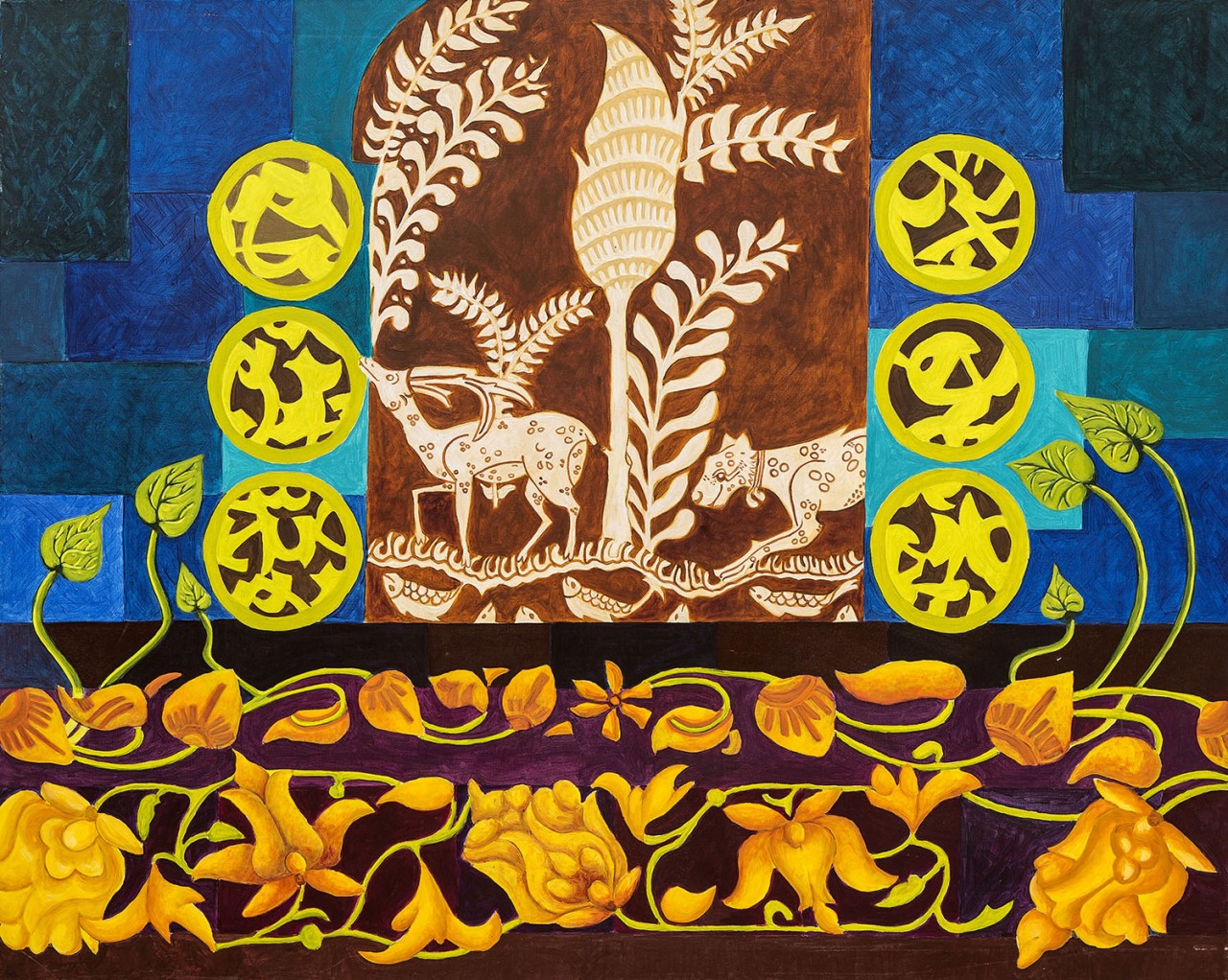
The Ibex and the Cheetah
Acrylic on canvas, 150×120cm
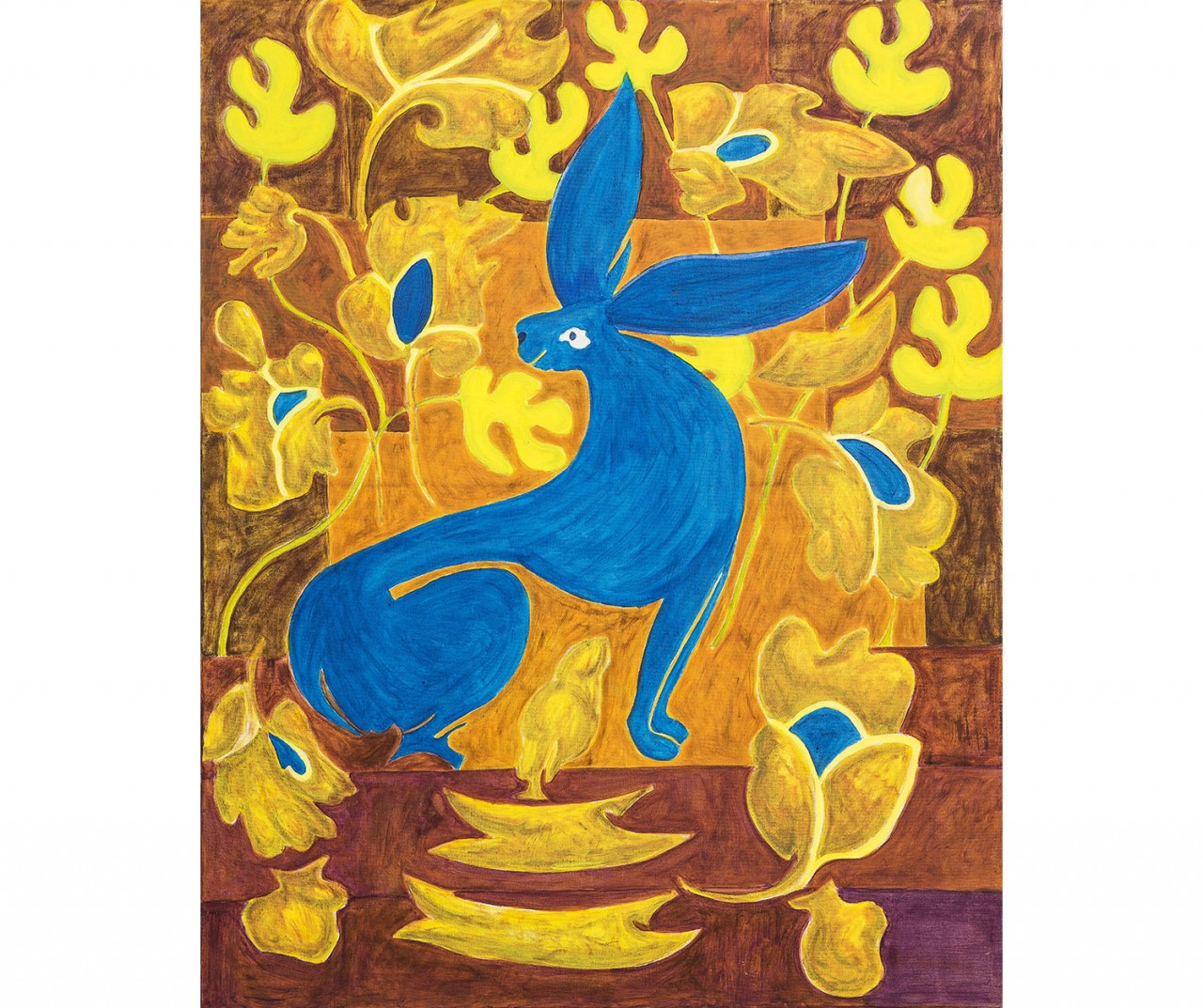
The Blue Hare
Acrylic on canvas, 80×100cm
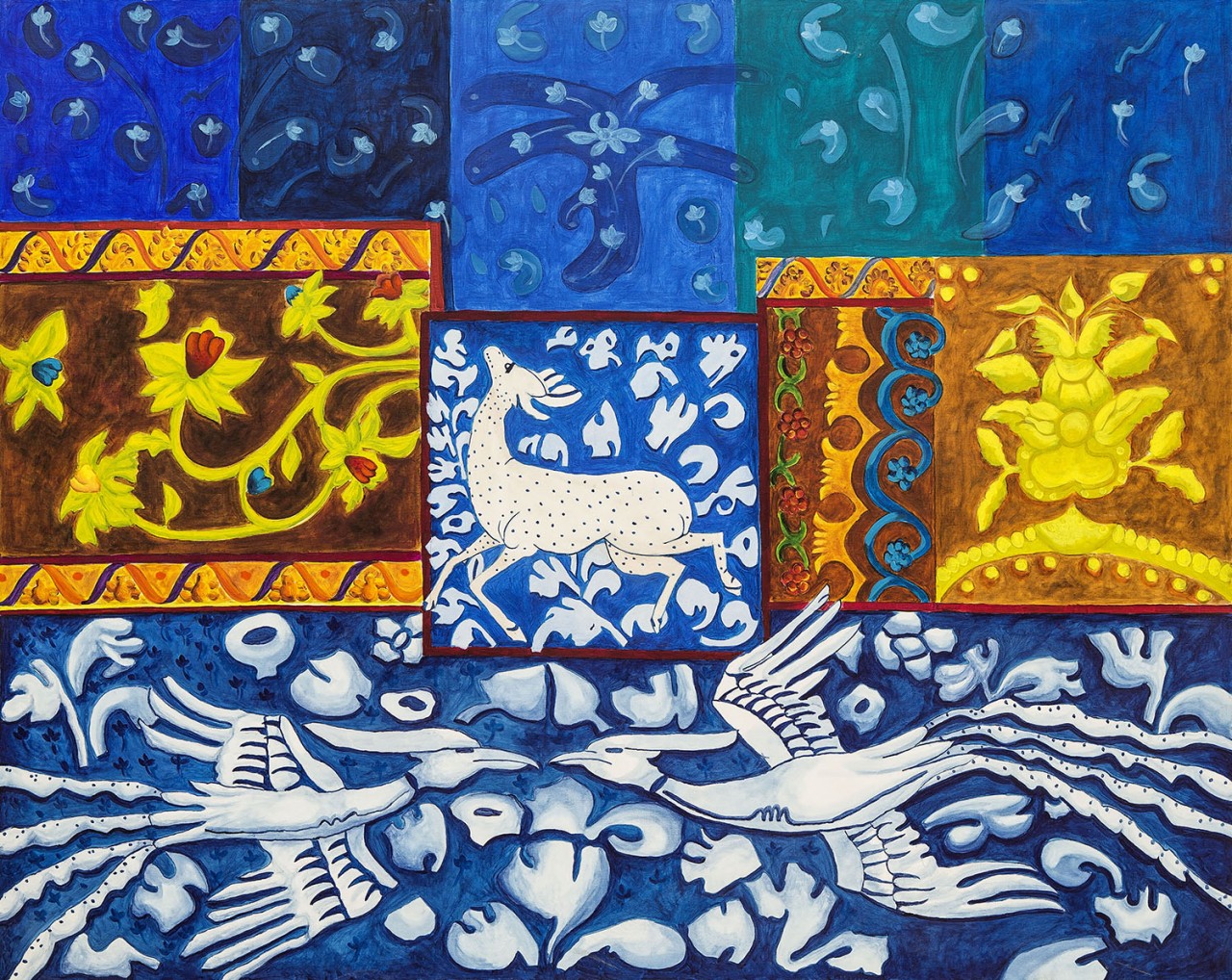
Deer on Blue
Acrylic on canvas, 150×120cm
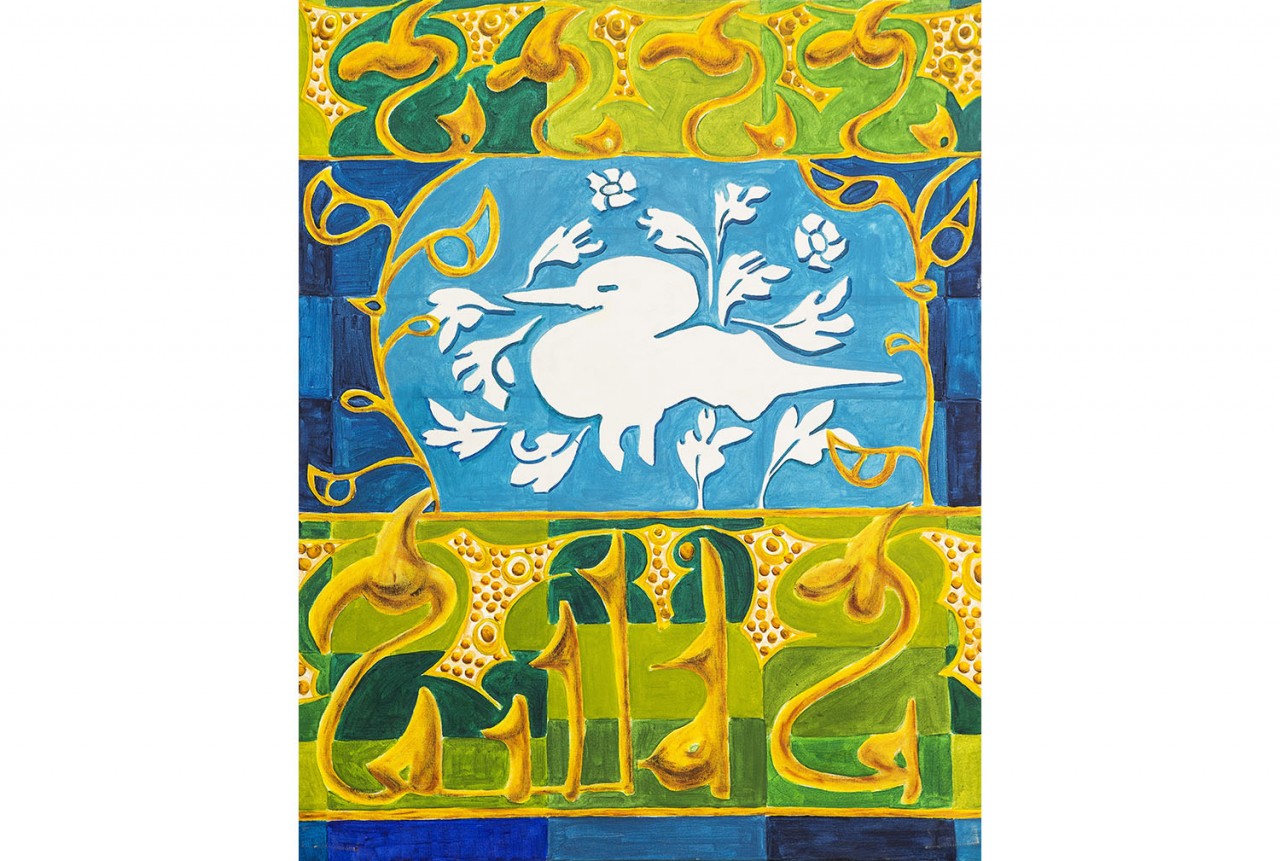
A Small Bird
Acrylic on canvas, 80×100cm
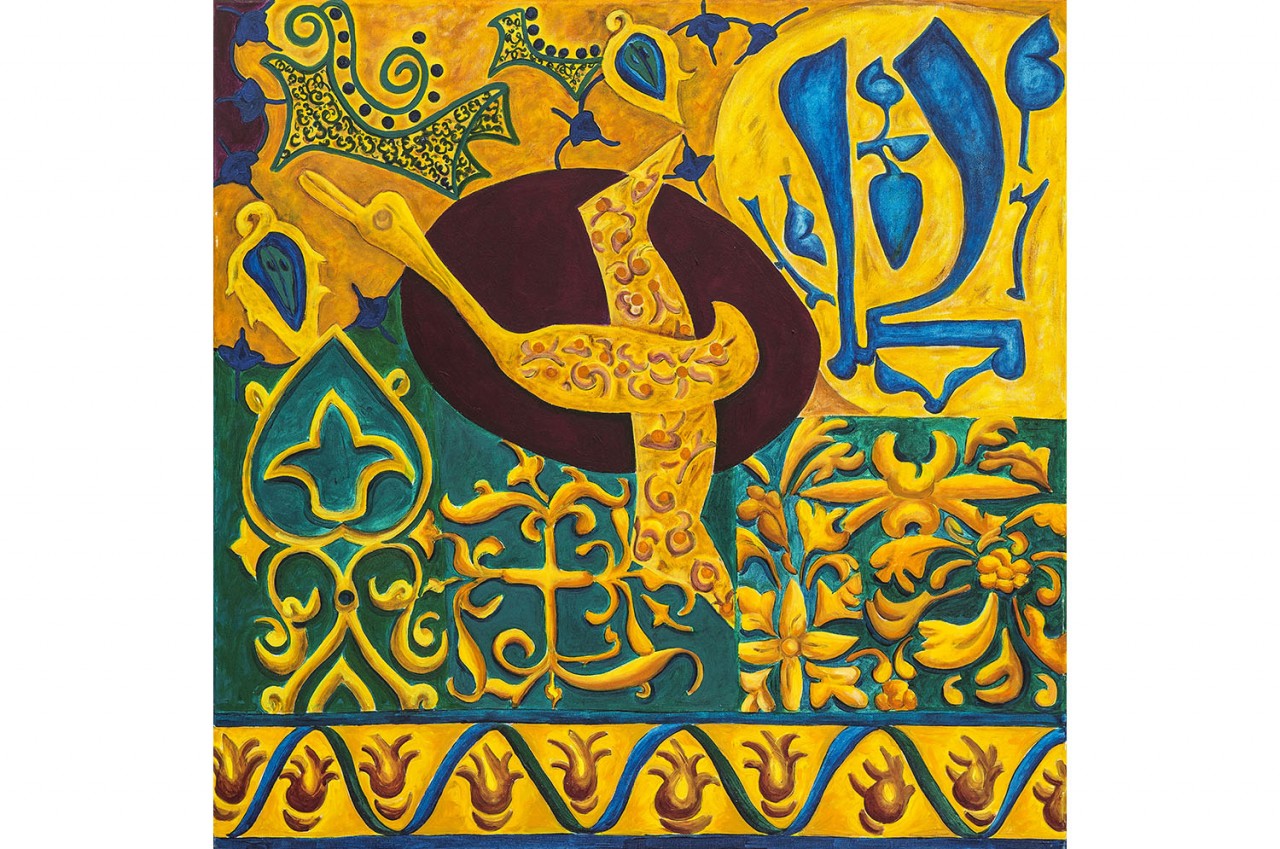
A Bird of Paradise
Acrylic on canvas, 100×100cm
Stepping Back
Kate Toledo’s first Dubai exhibition. Upon moving to the Middle-East in 2006, Kate explored old souks and villages, becoming fascinated by the designs of old houses, ornate doors, mashrabiya windows and balconies. These images were the basis of 2009 Dubai exhibition ‘Stepping Back’. “I have combined my Brazilian palette with the architecture of the region and something really vibrant evolved. I am reminded of the richness of the culture and its history”.

Blue Squares
Acrylic on canvas, 150×120cm
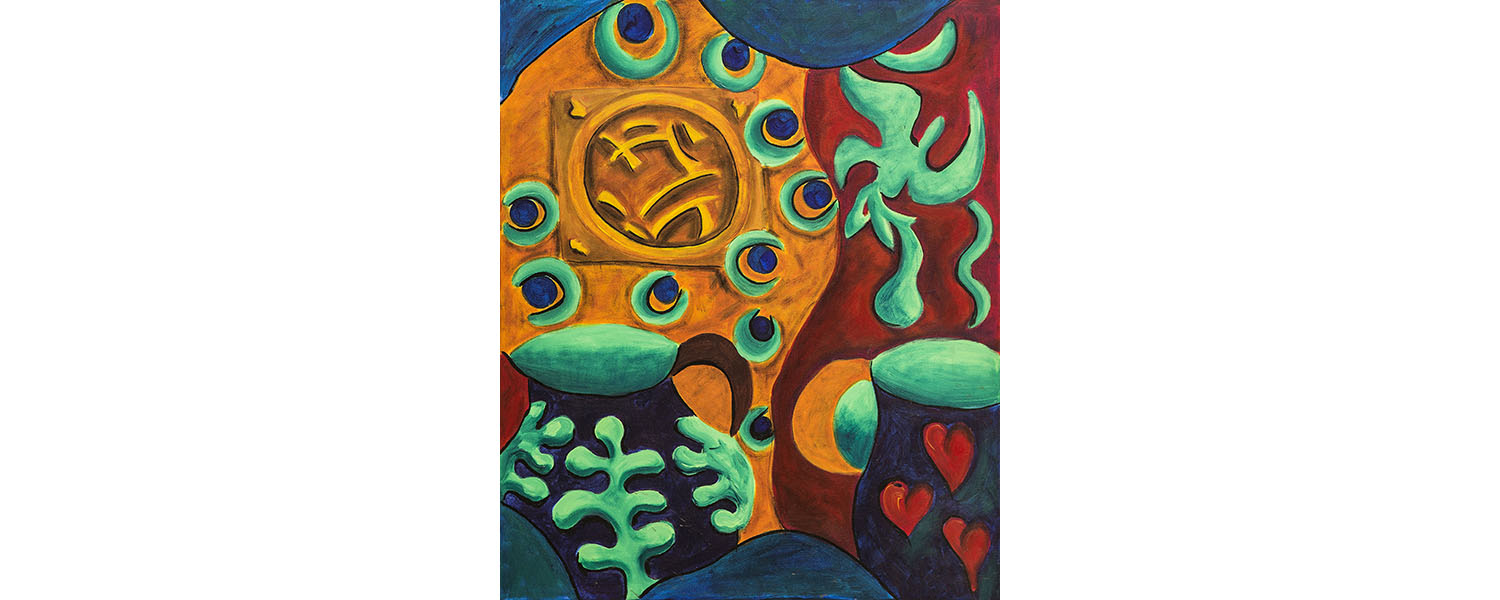
The Day Has Come
Acrylic on canvas, 50×60cm
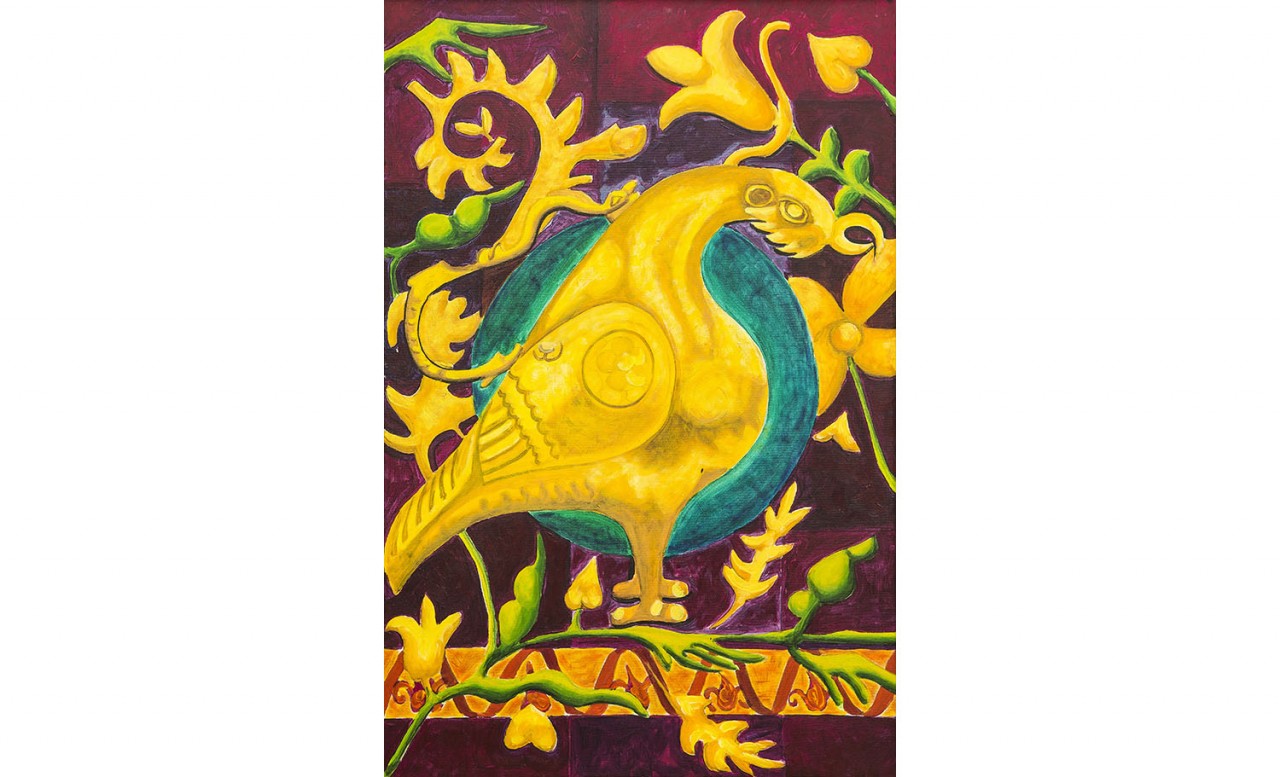
The Brass Bird
Acrylic on canvas, 60×80cm
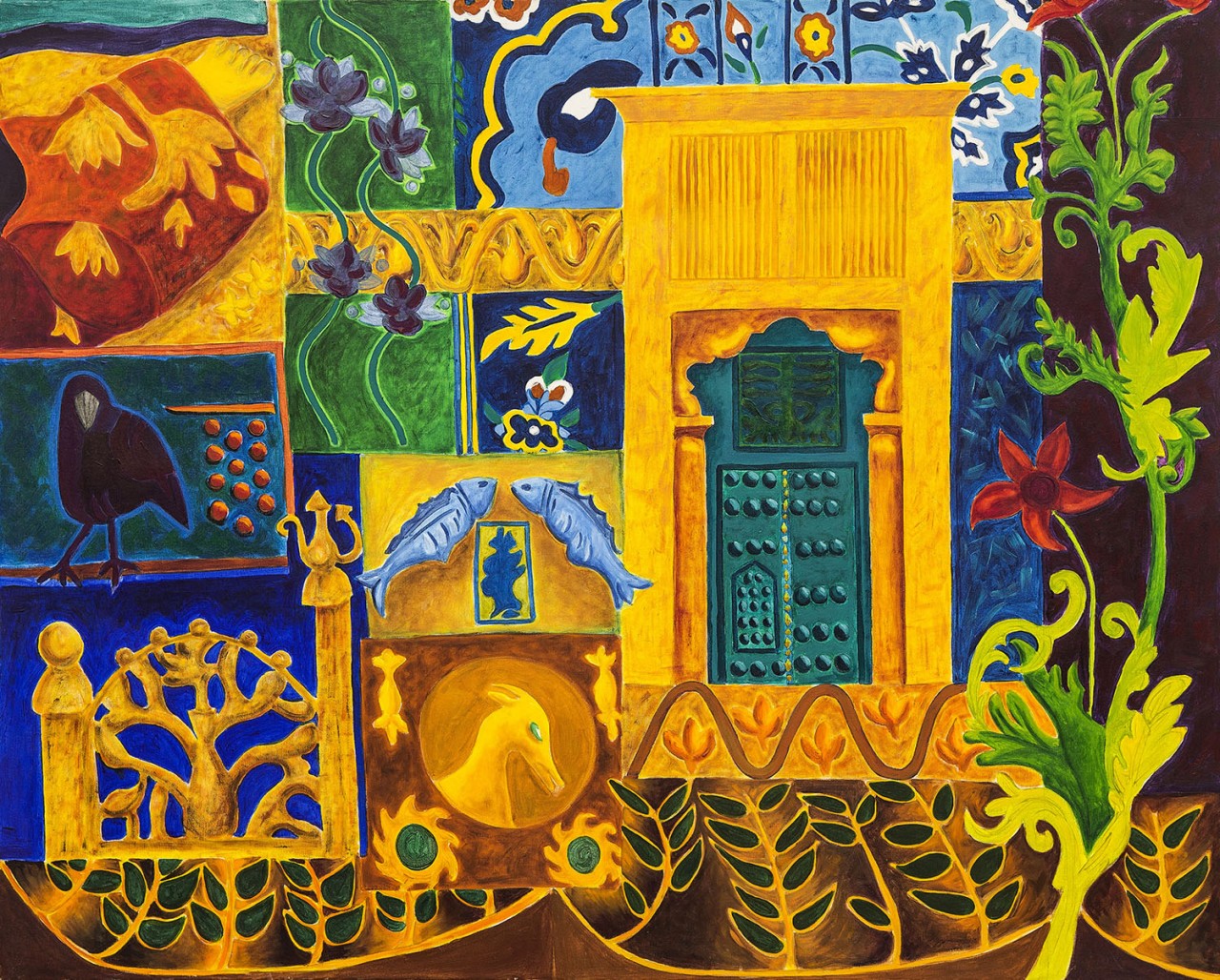
Pieces of Life
Acrylic on canvas, 150×120cm
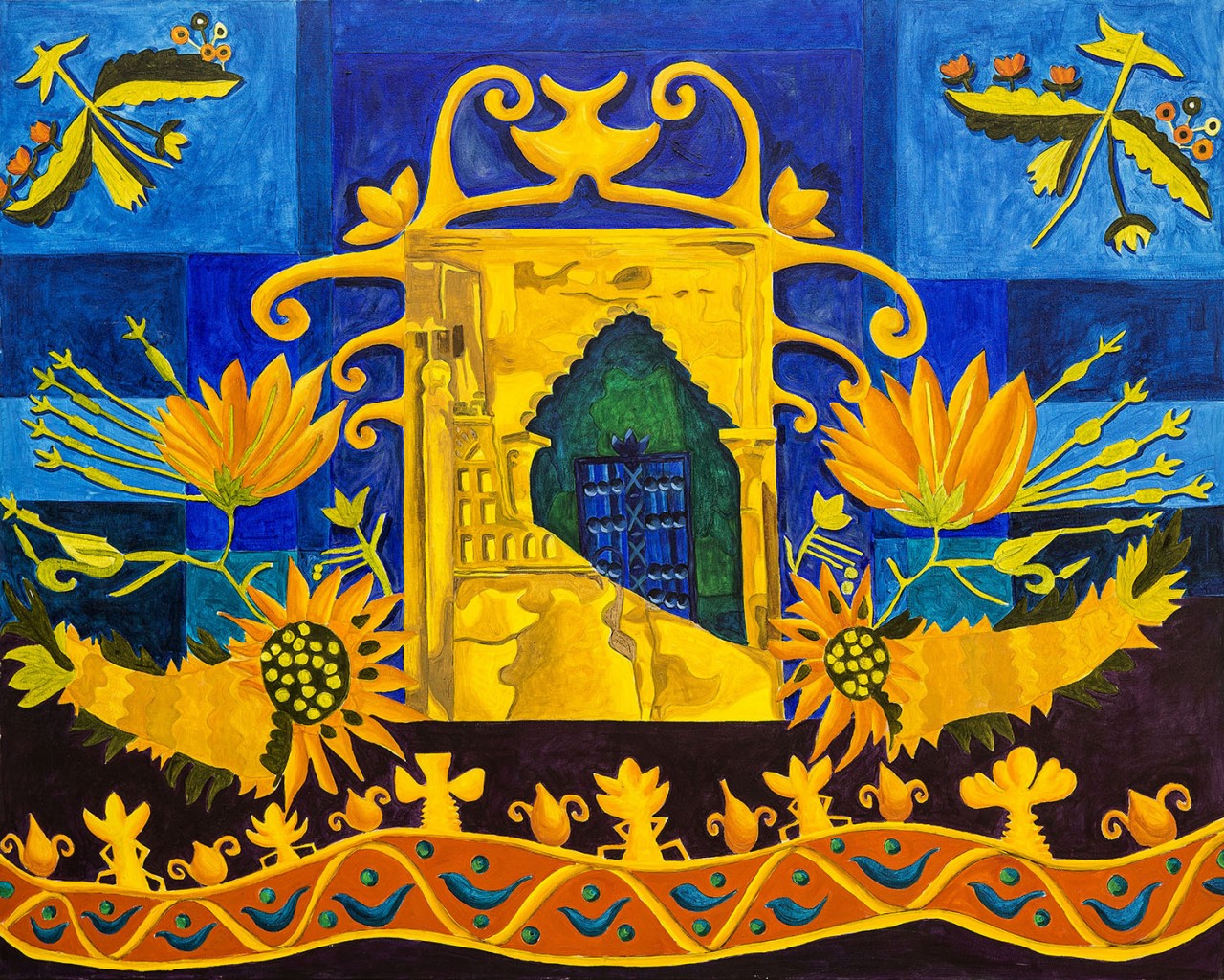
From My Garden
Acrylic on canvas, 150×120cm
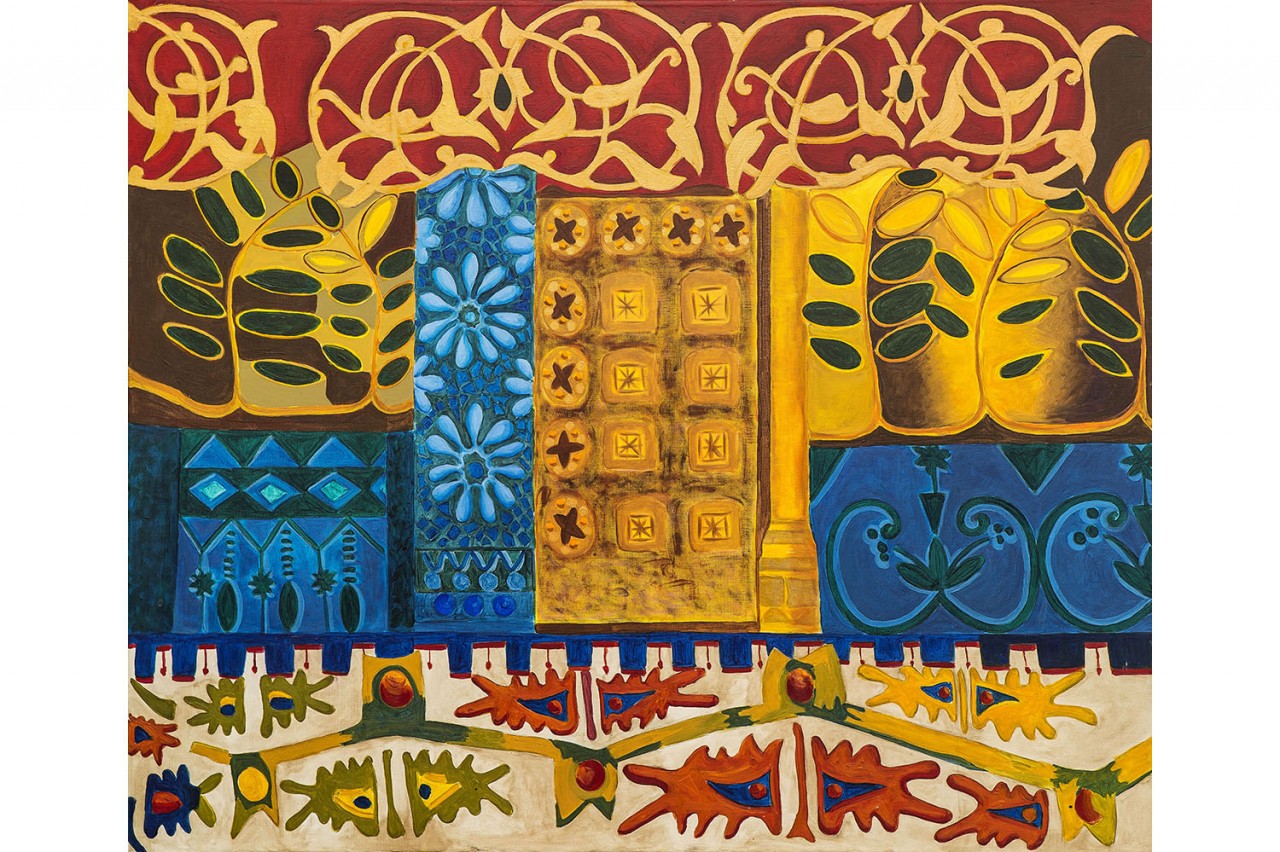
Doorway to the Mosque
Acrylic on canvas, 120×100cm
The Brazil Paintings
Kate’s Brazil paintings, during her time there, were inspired by the richness of the Baroque art found in Brazilian churches and sacred spaces. Her Brazil paintings are heavily influenced by the colours and shapes of the Afro-Roman Catholic syncretism found in the Brazilian hinterland. It is easy to recognize in Kate’s work the influence of “festa do divino” images; rococo splendours in rich textures of gold; the royal and purple blue of the saints, mixing with the red and ochre of the figas and chicken blood from the African religion Candomblé.
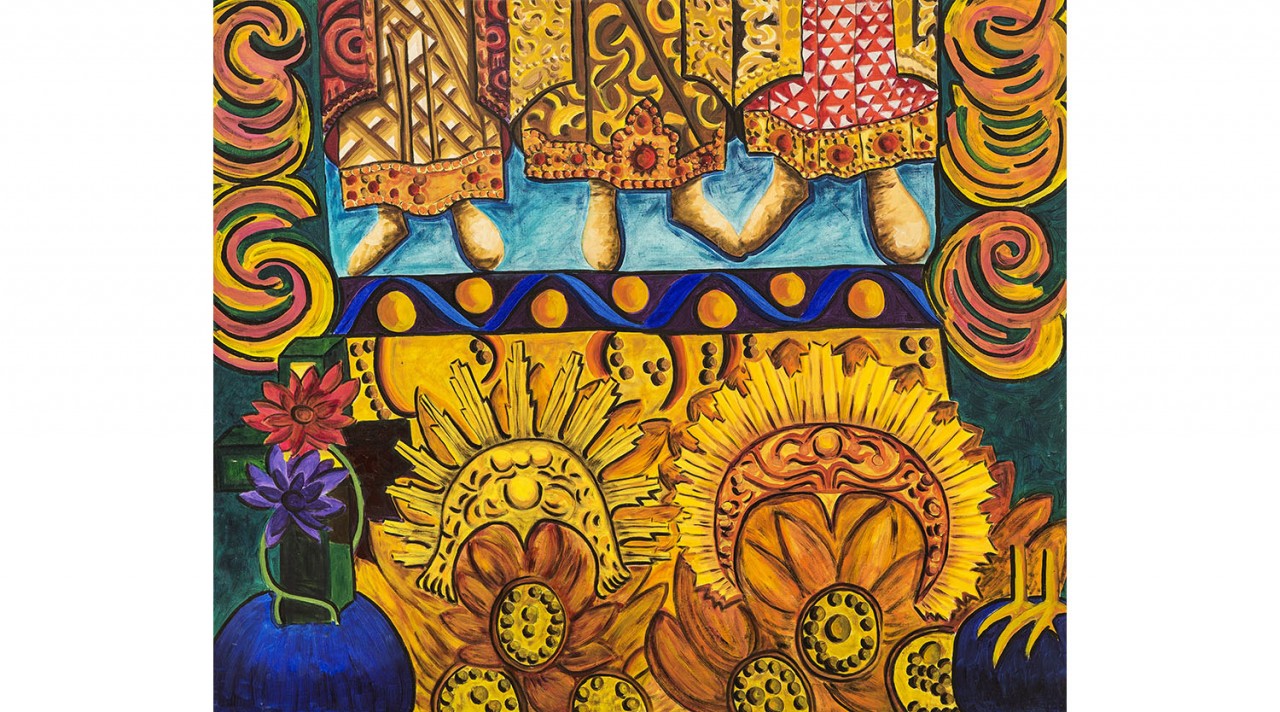
The Robes of Rich Men
Acrylic on canvas, 100×100cm

The Gown
Acrylic on canvas, 146×125cm
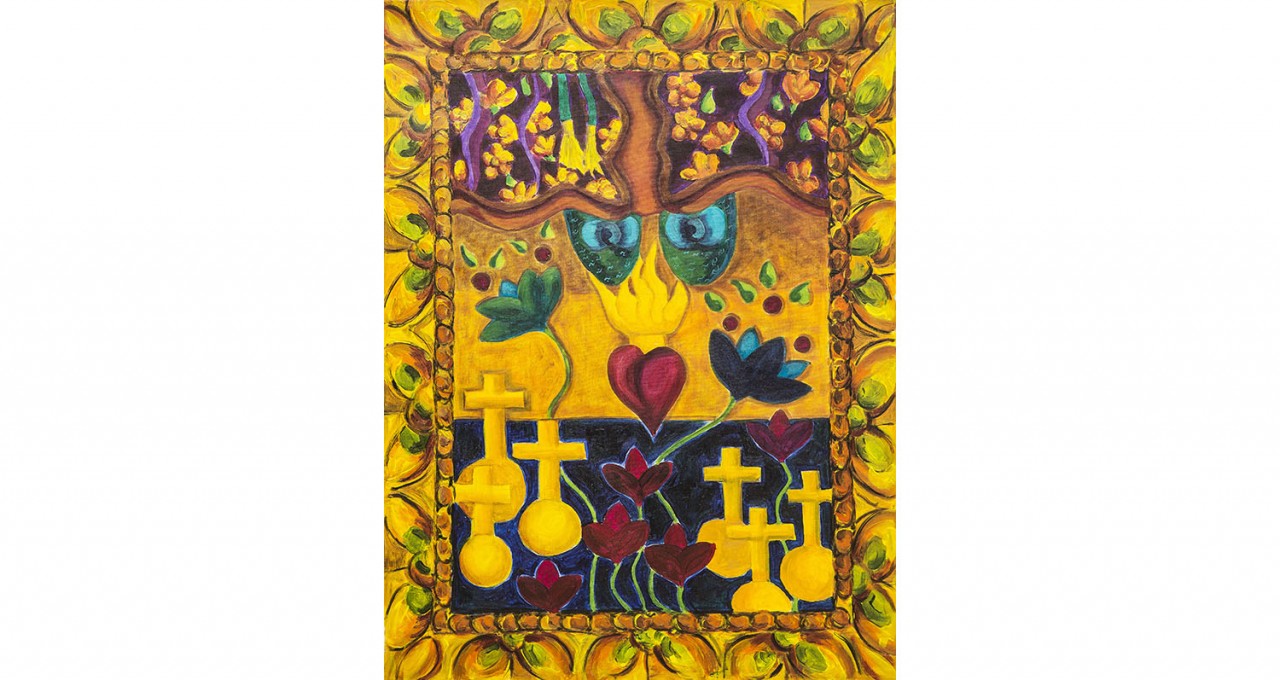
The Blue and Green Slippers
Acrylic on canvas, 60×80cm

Royal Slippers
Acrylic on canvas, 60×80cm

Pes de Santos
Acrylic on canvas, 125×70cm
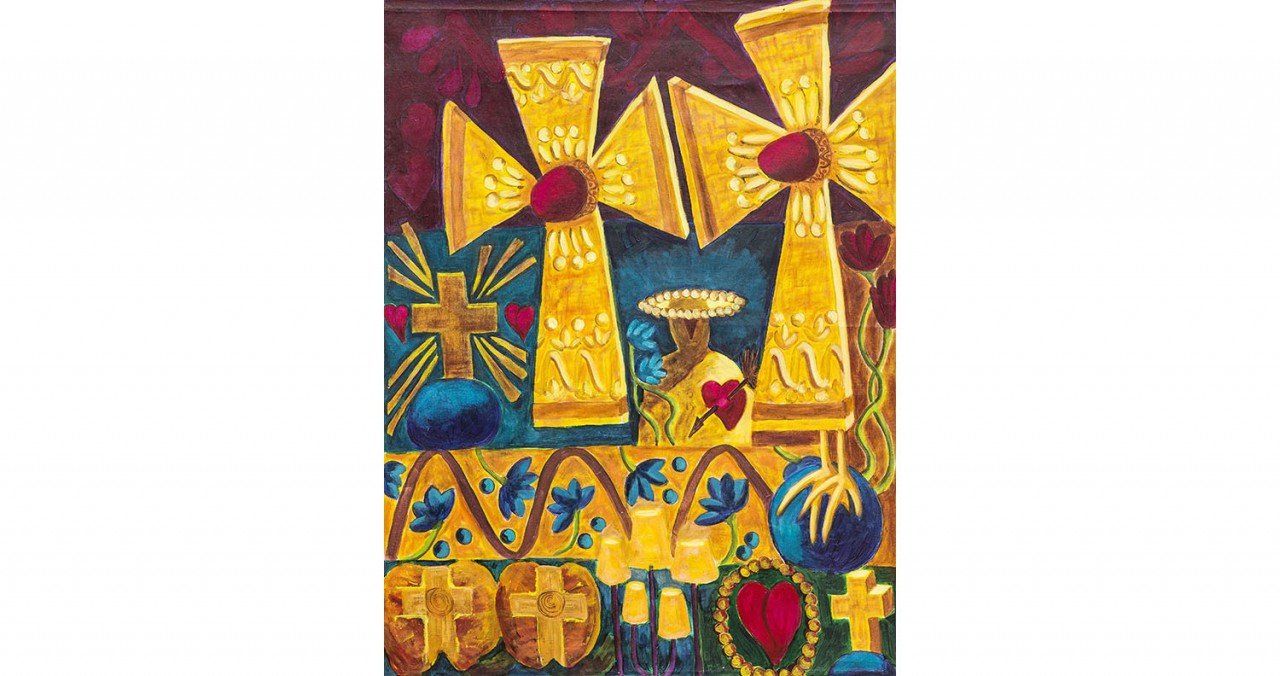
Le Ciel
Acrylic on canvas, 60×80cm

L'annonciation du Printemps
Acrylic on canvas, 60×80cm
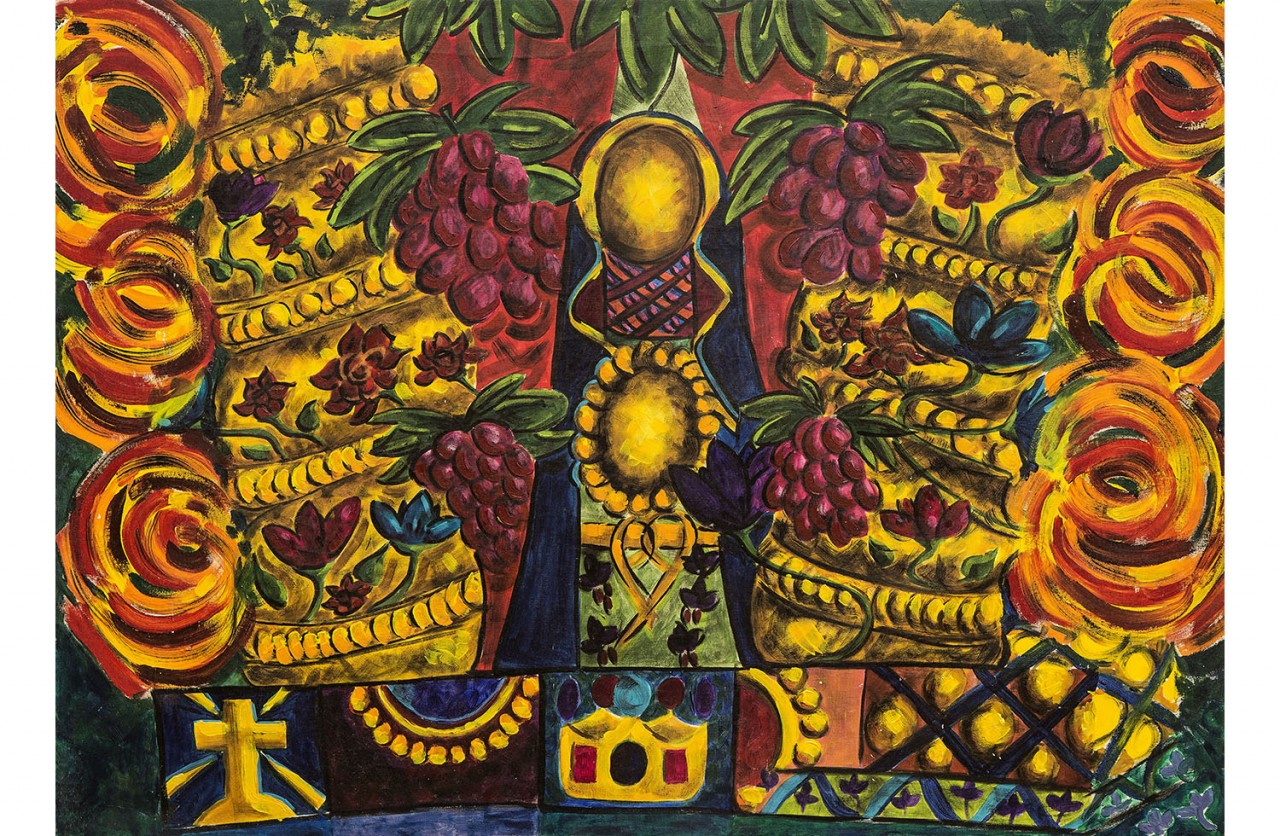
Grapes
Acrylic on canvas, 137×97cm
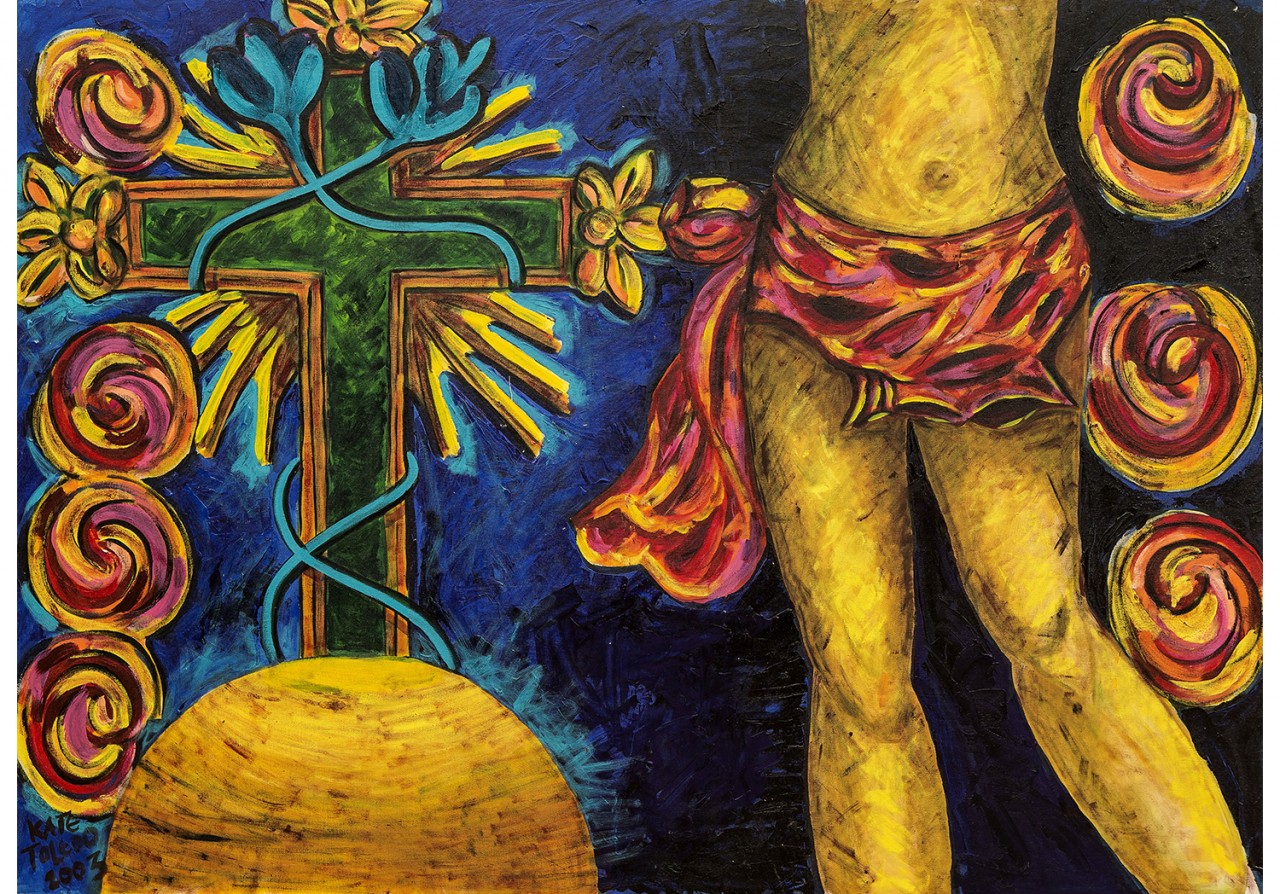
Cristo and Cruz
Acrylic on canvas, 146×97cm

Ciel avec Poires
Acrylic on canvas, 60×80cm
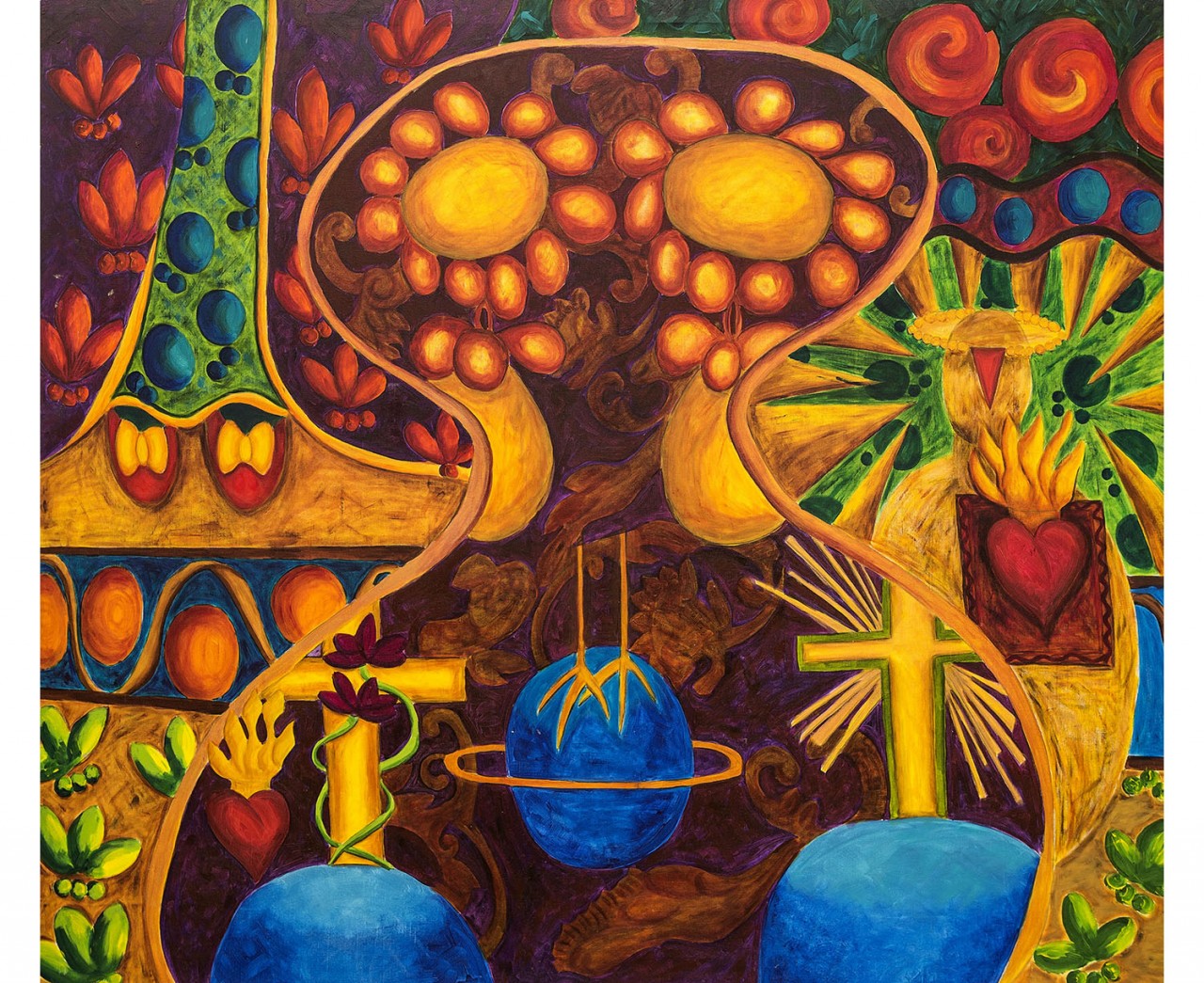
A Pair of Earrings
Acrylic on canvas, 140×160cm
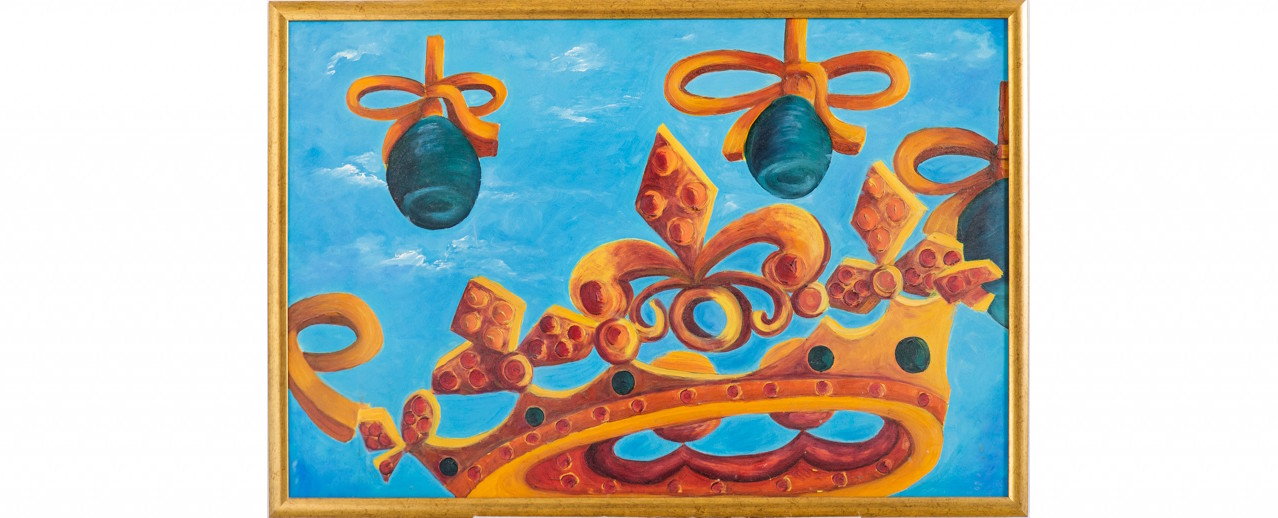
The Crown Acrylic on board, 50x75 cm